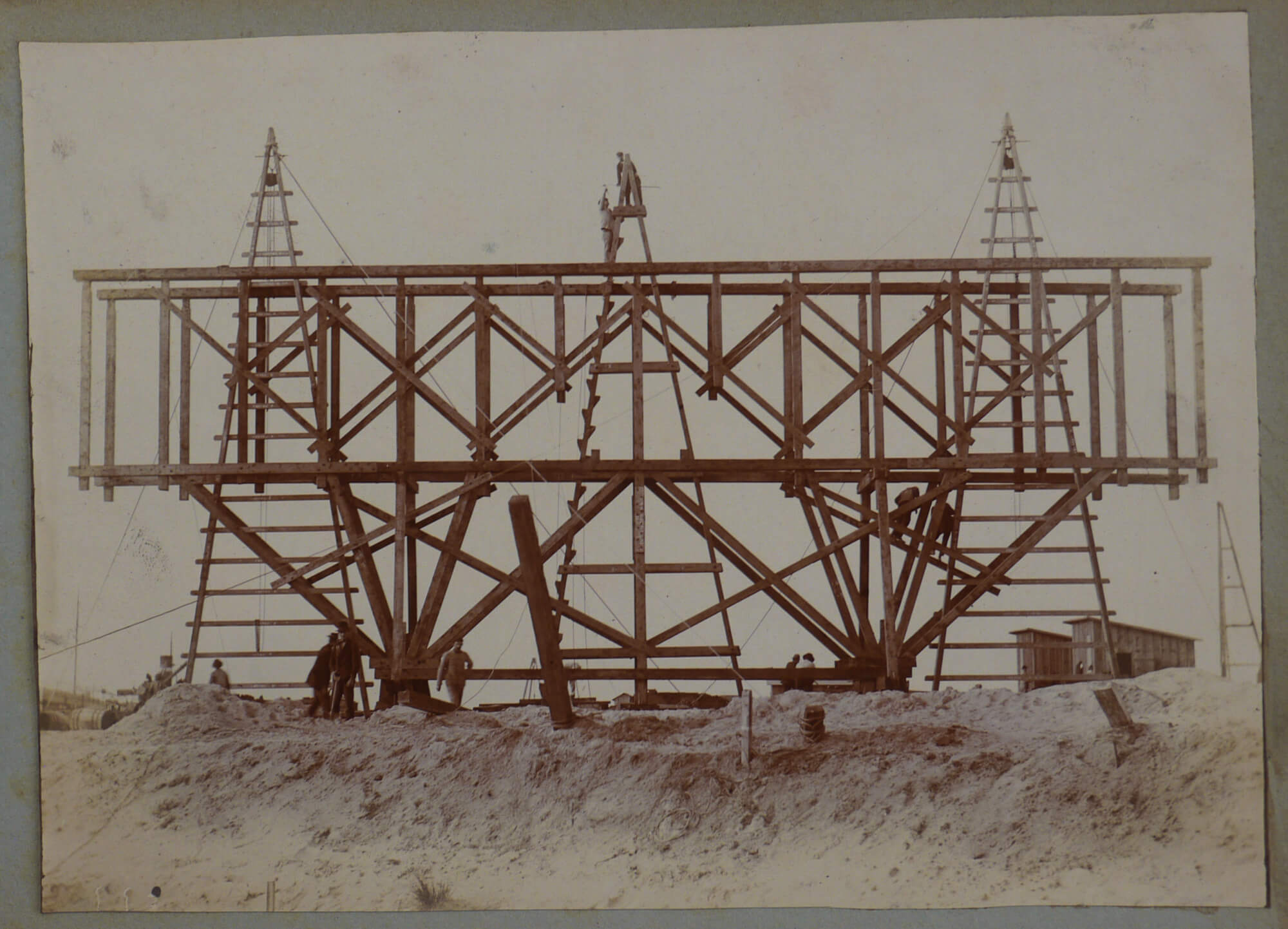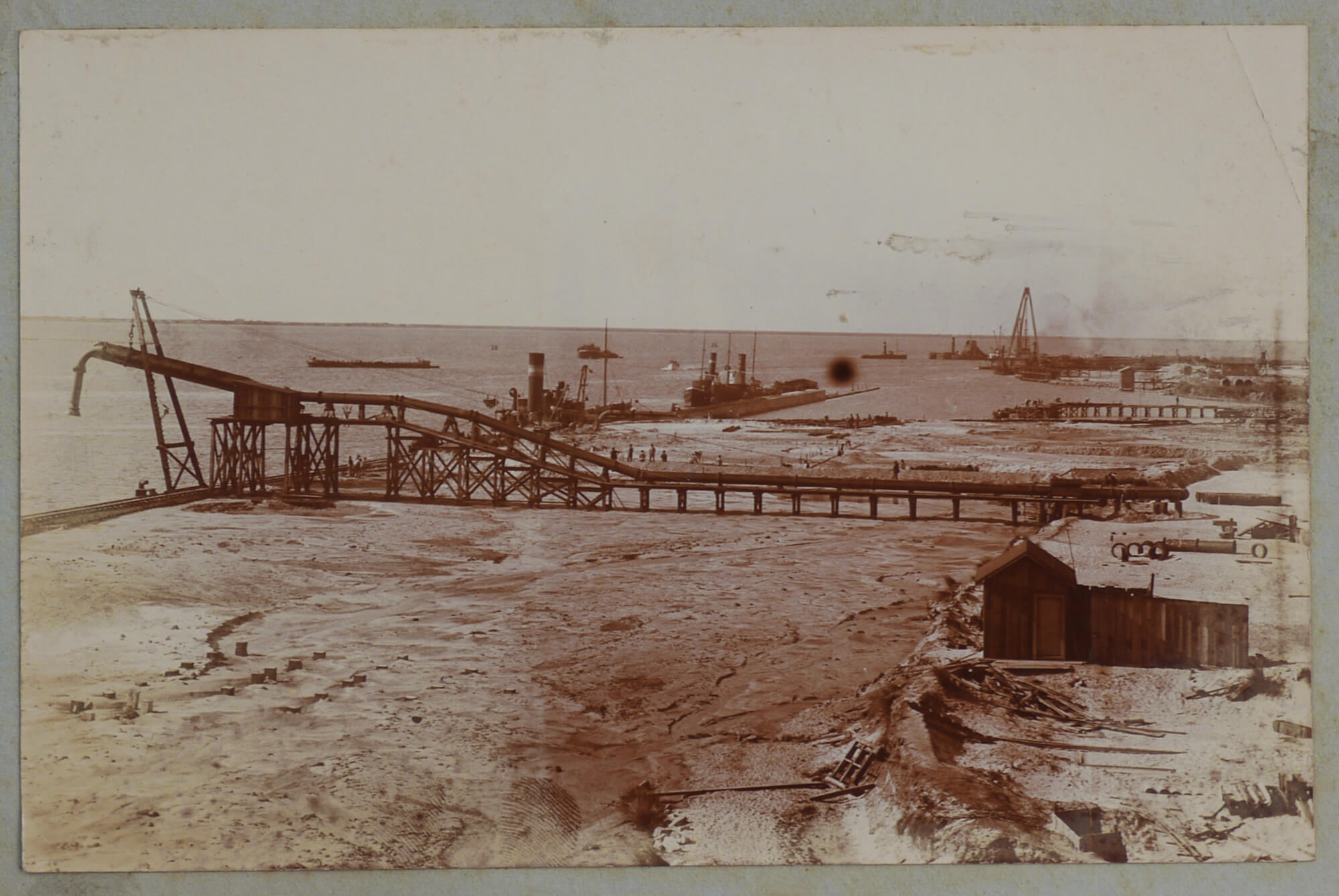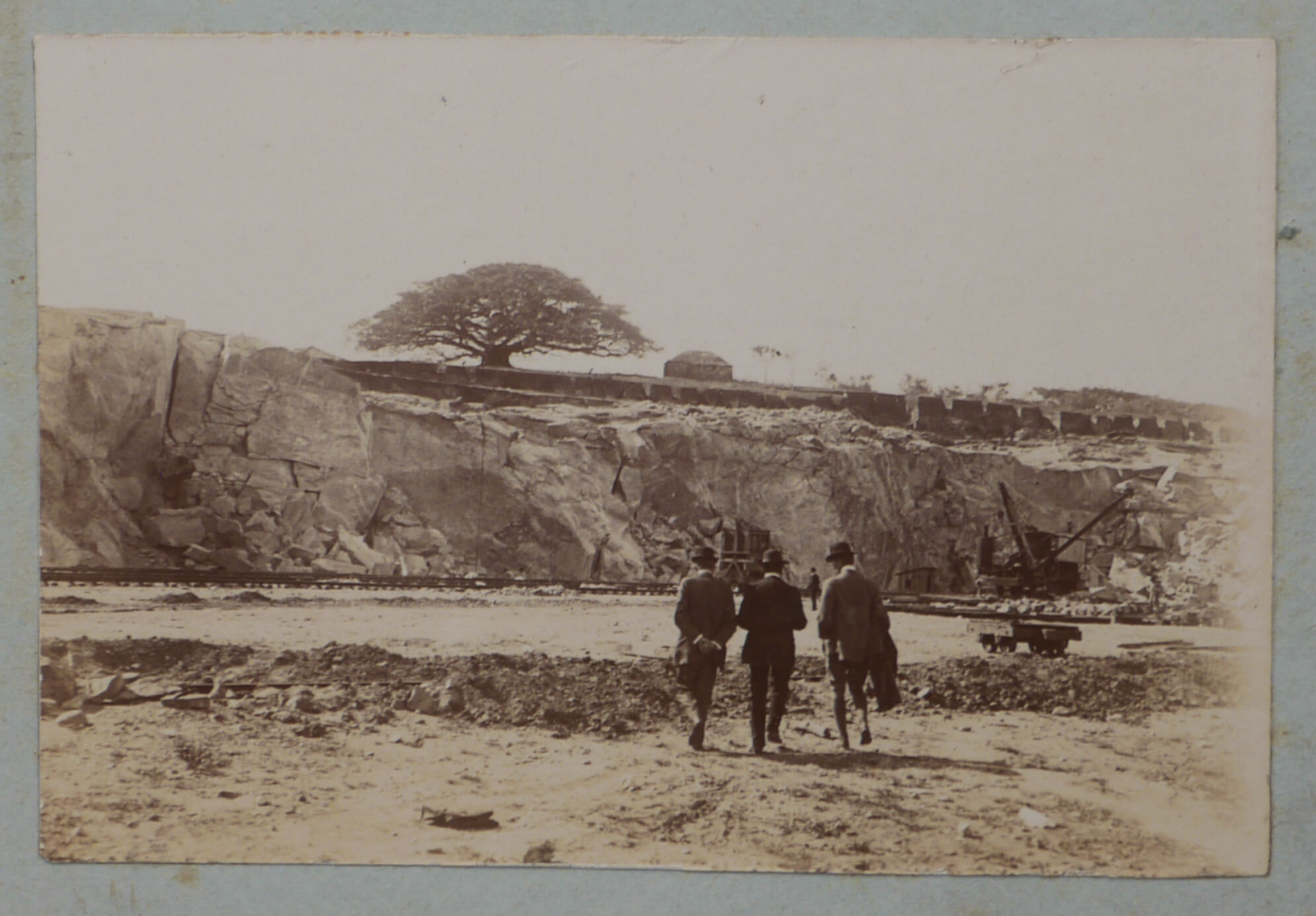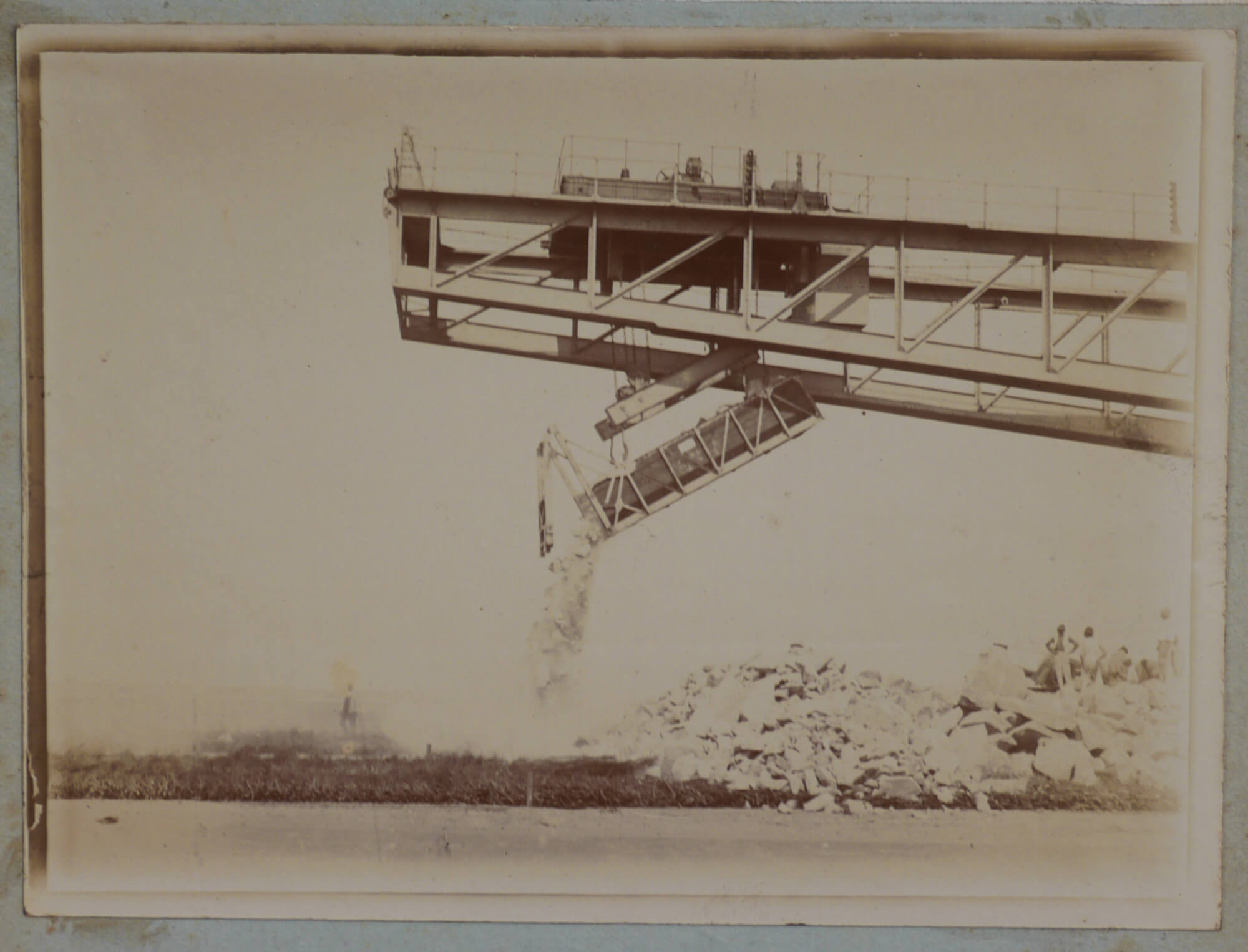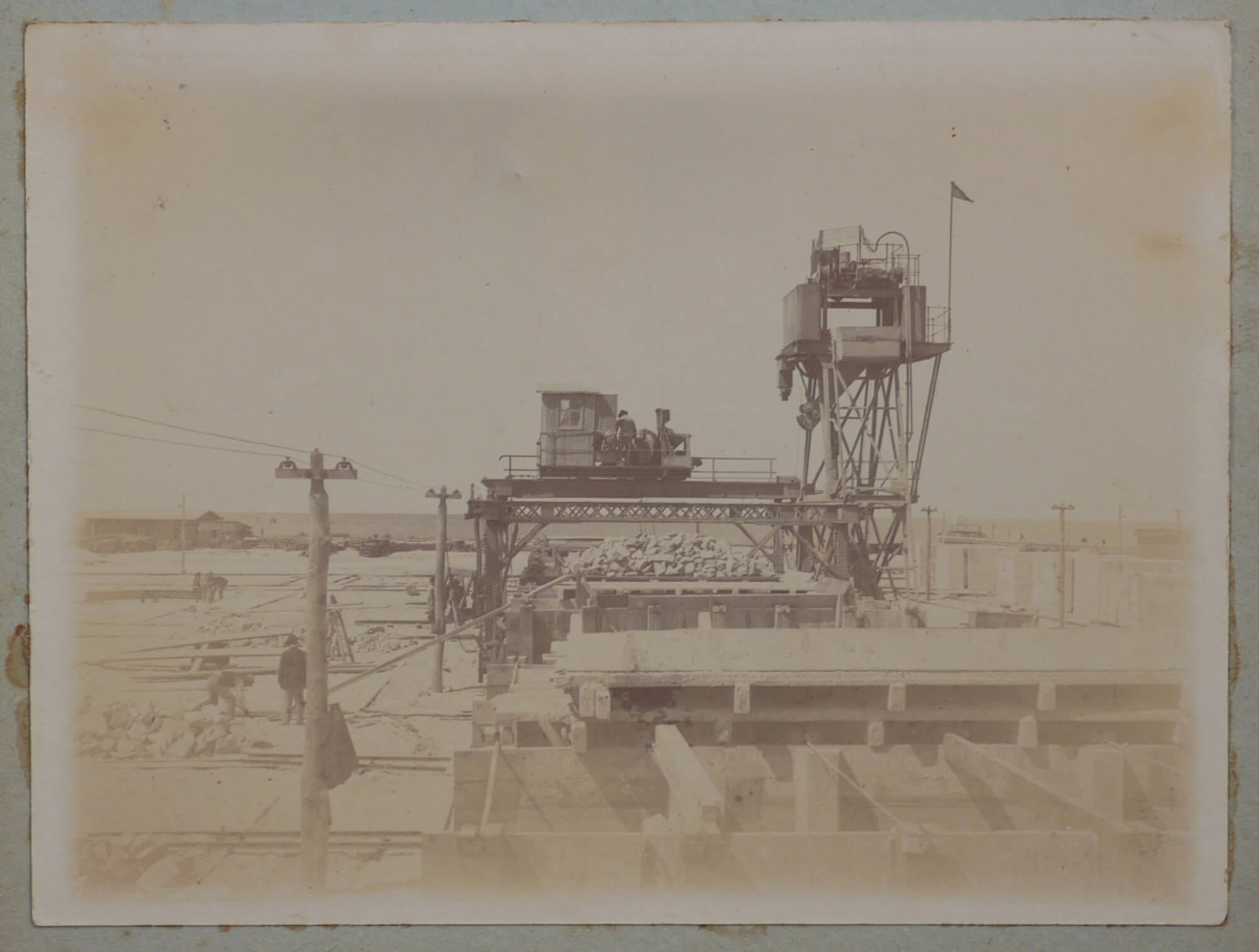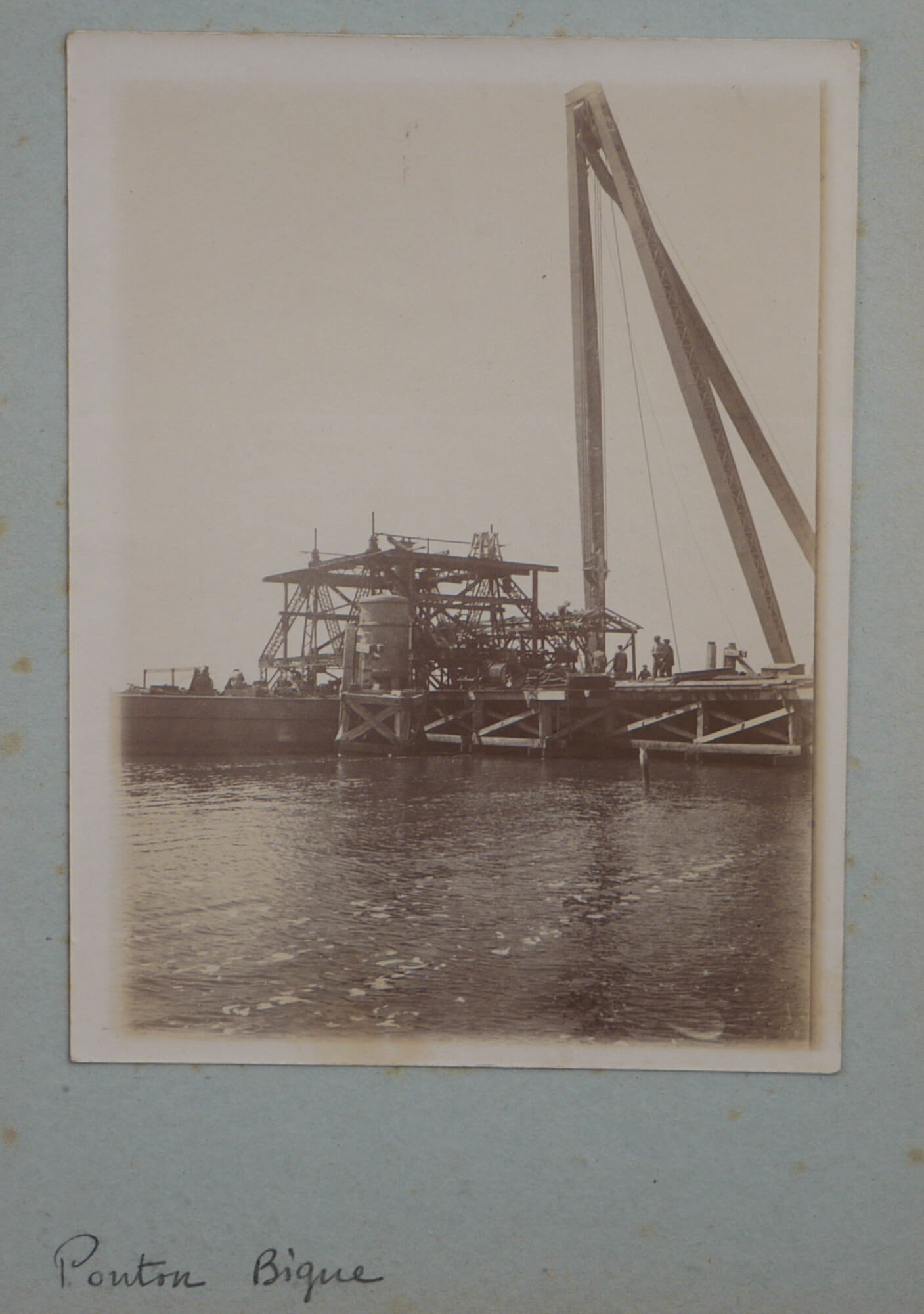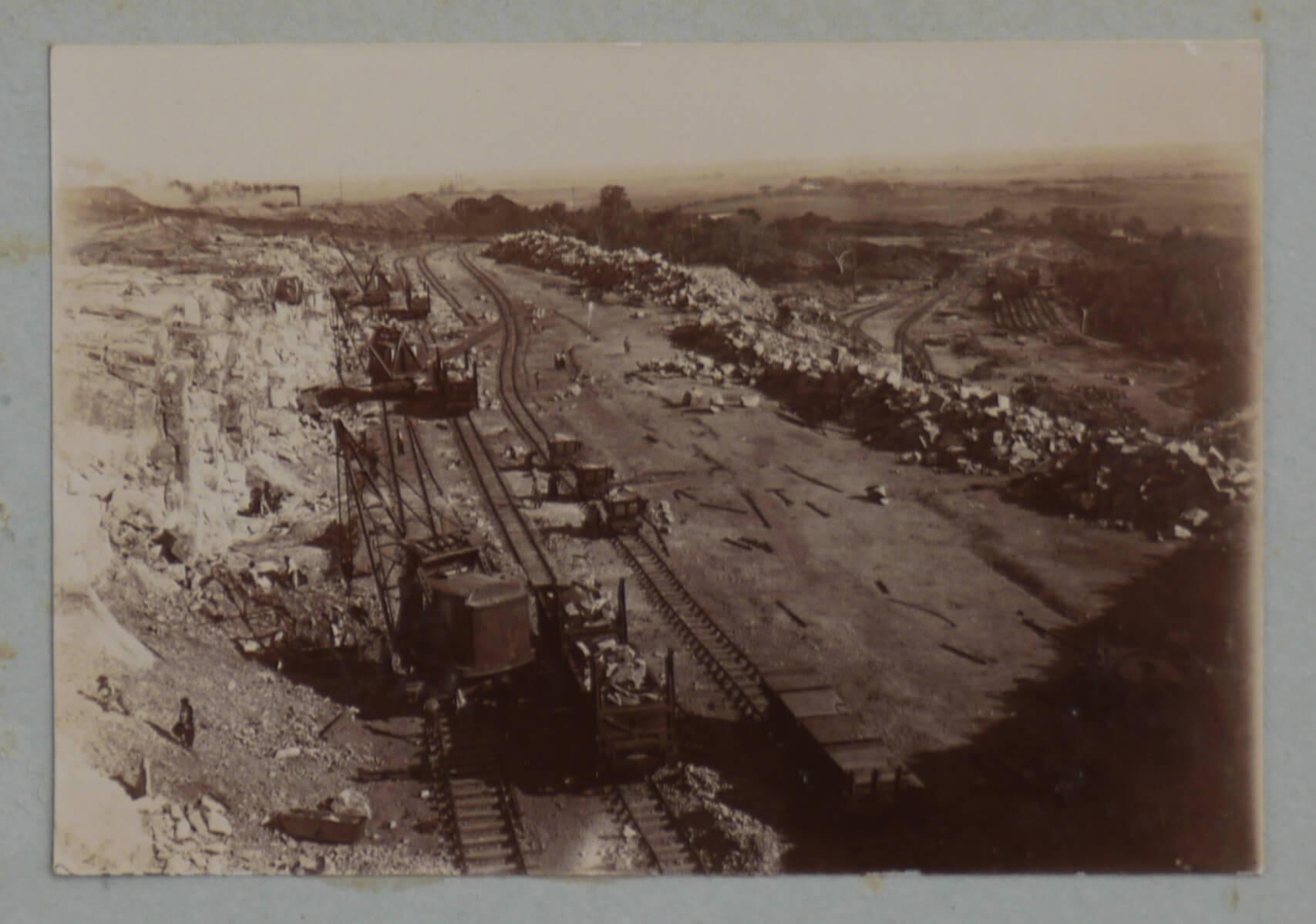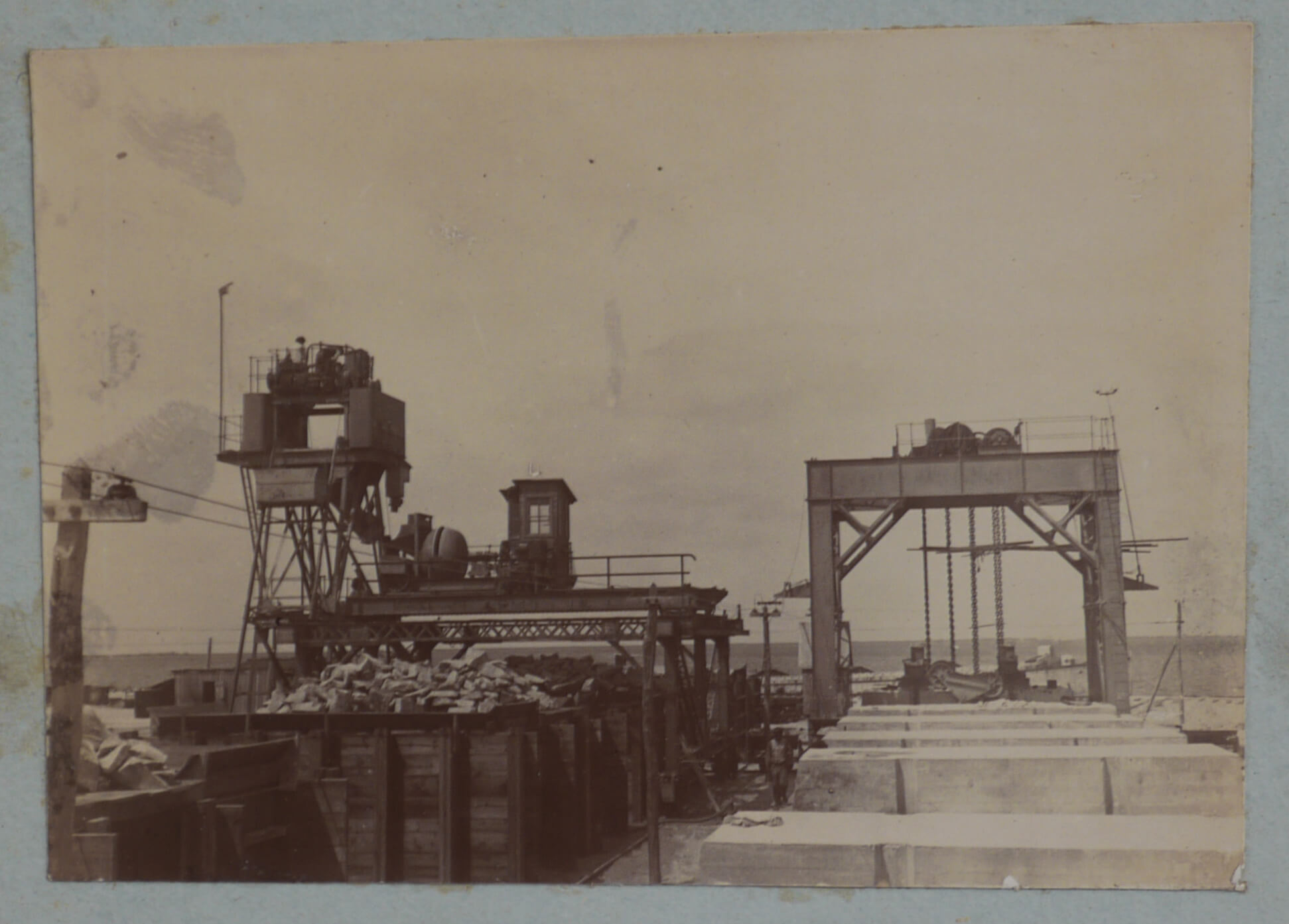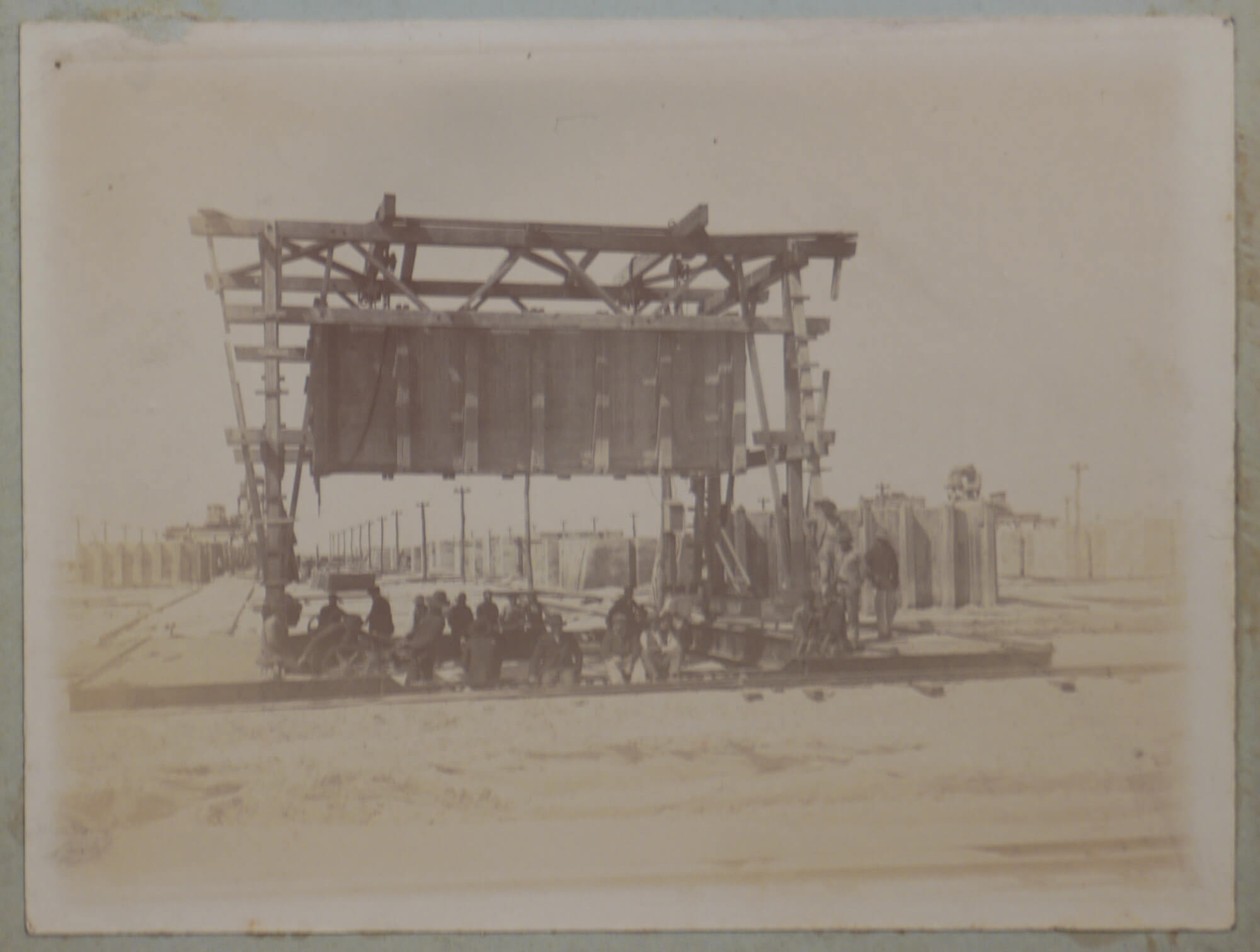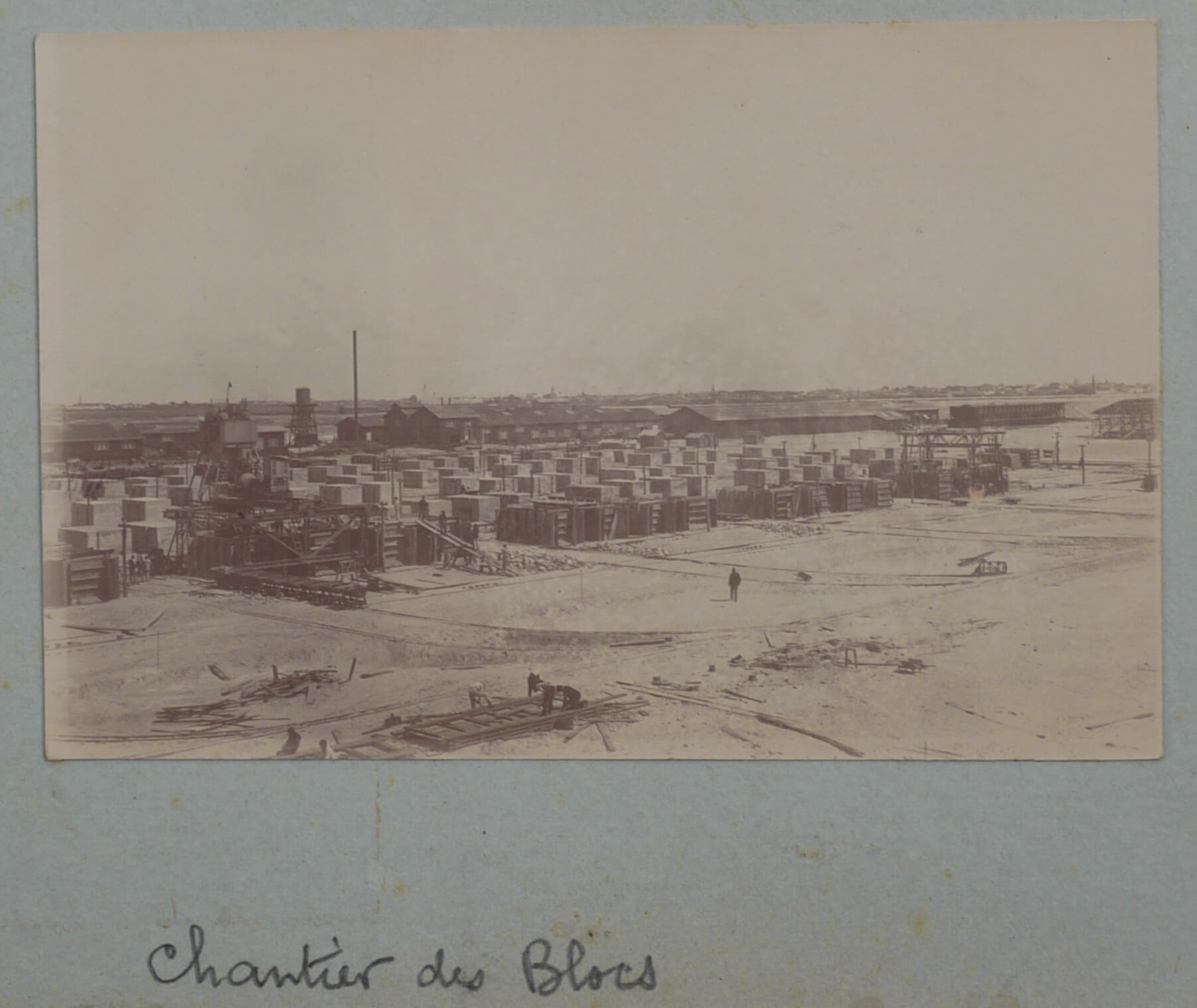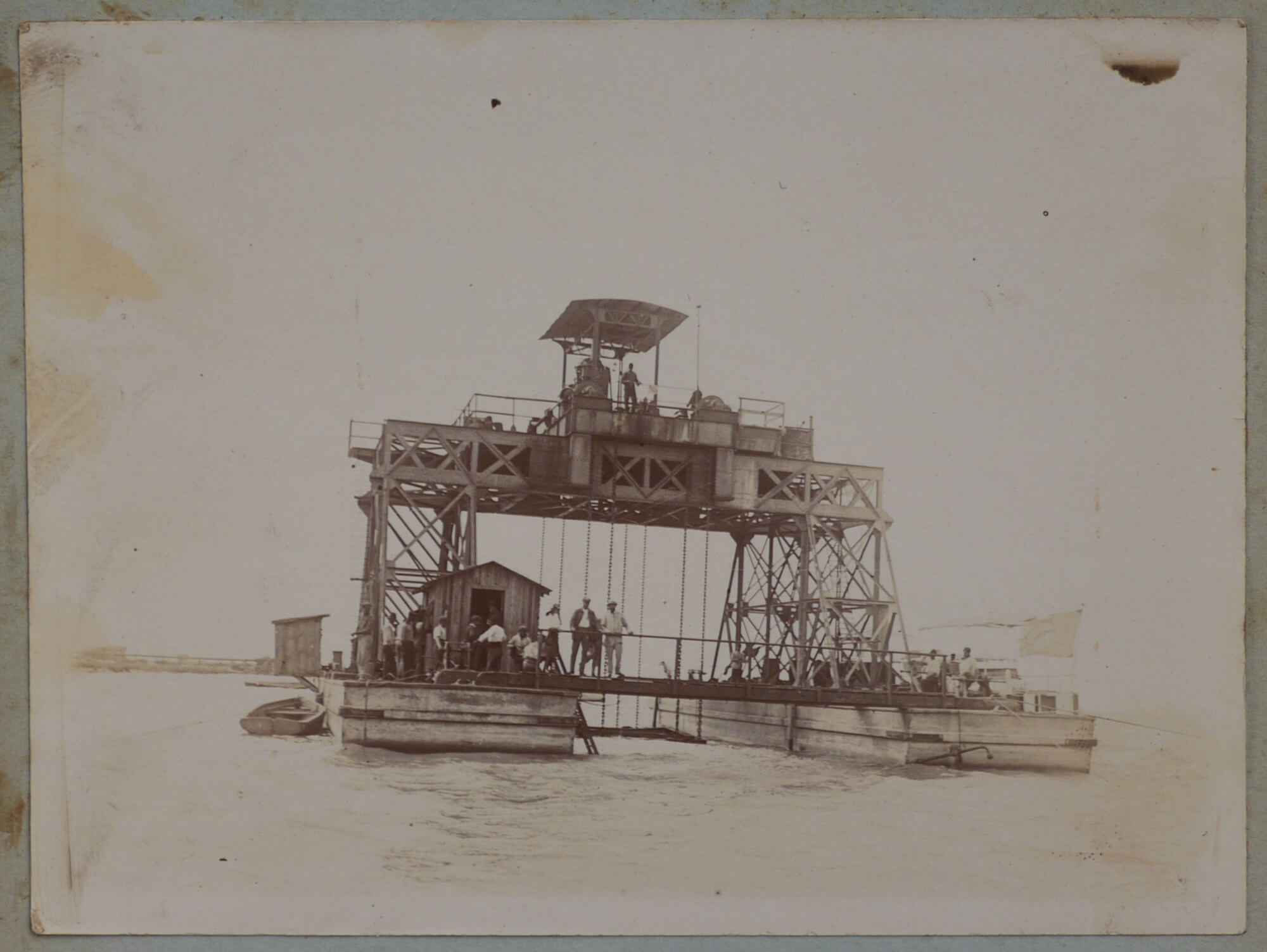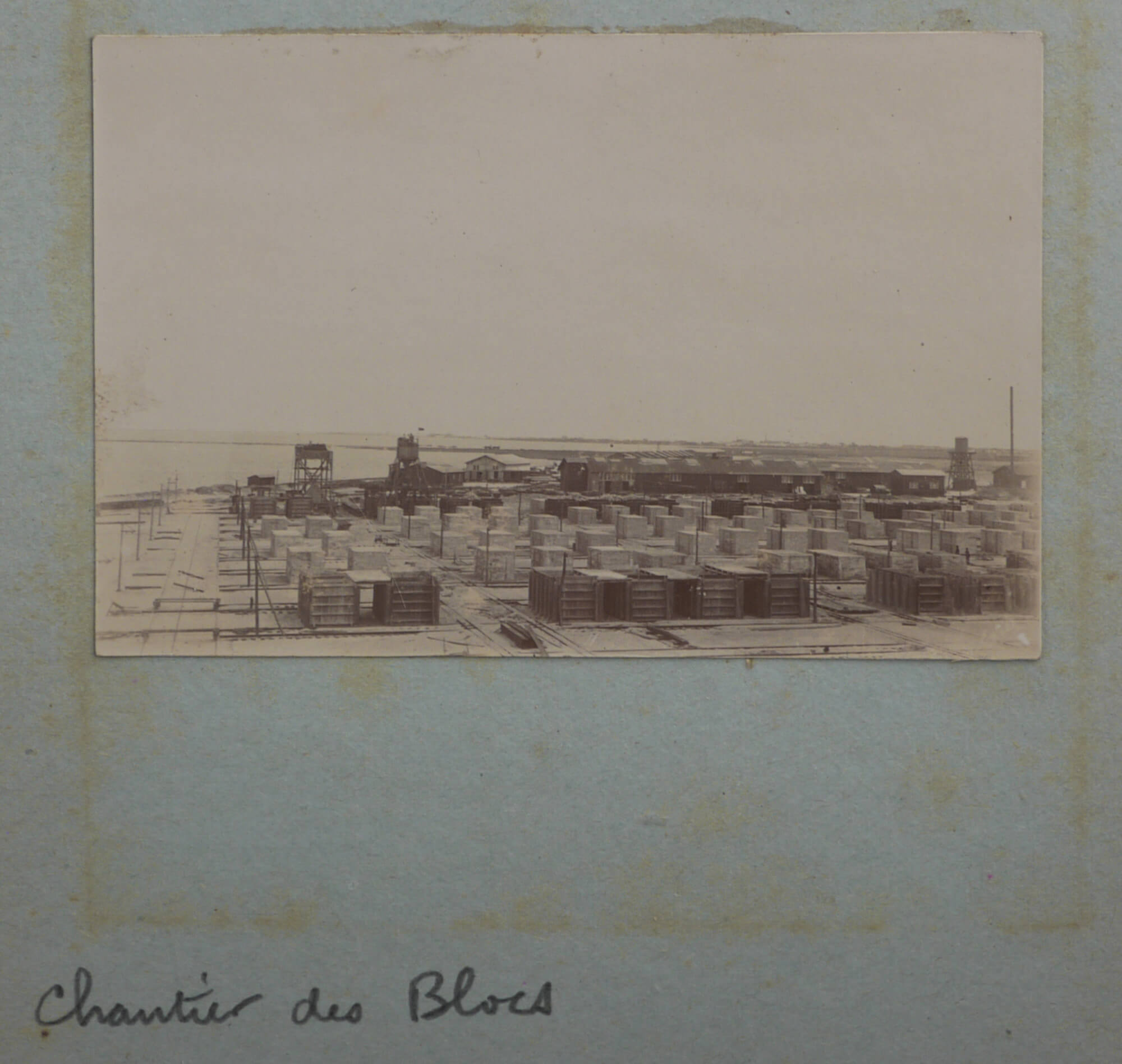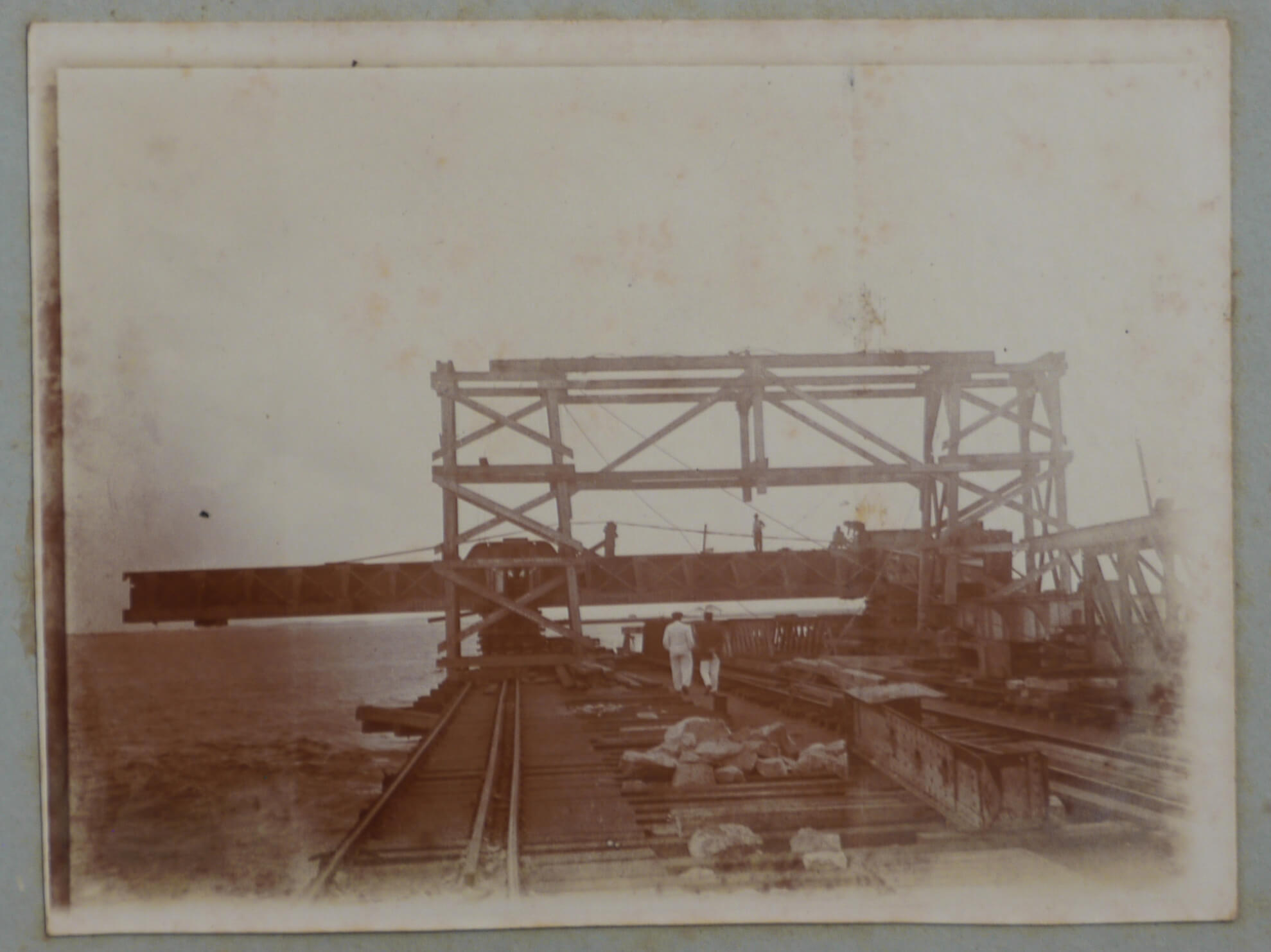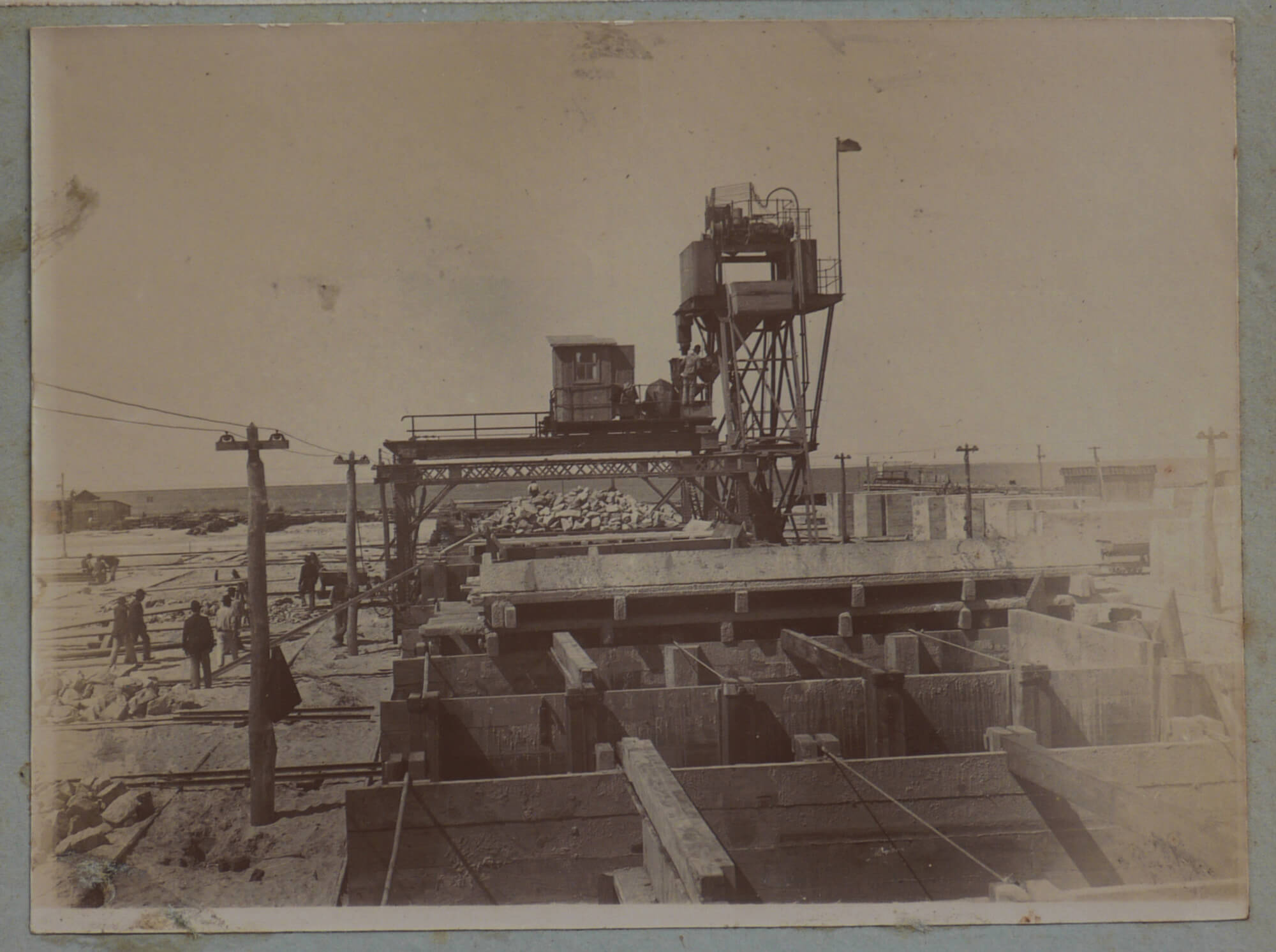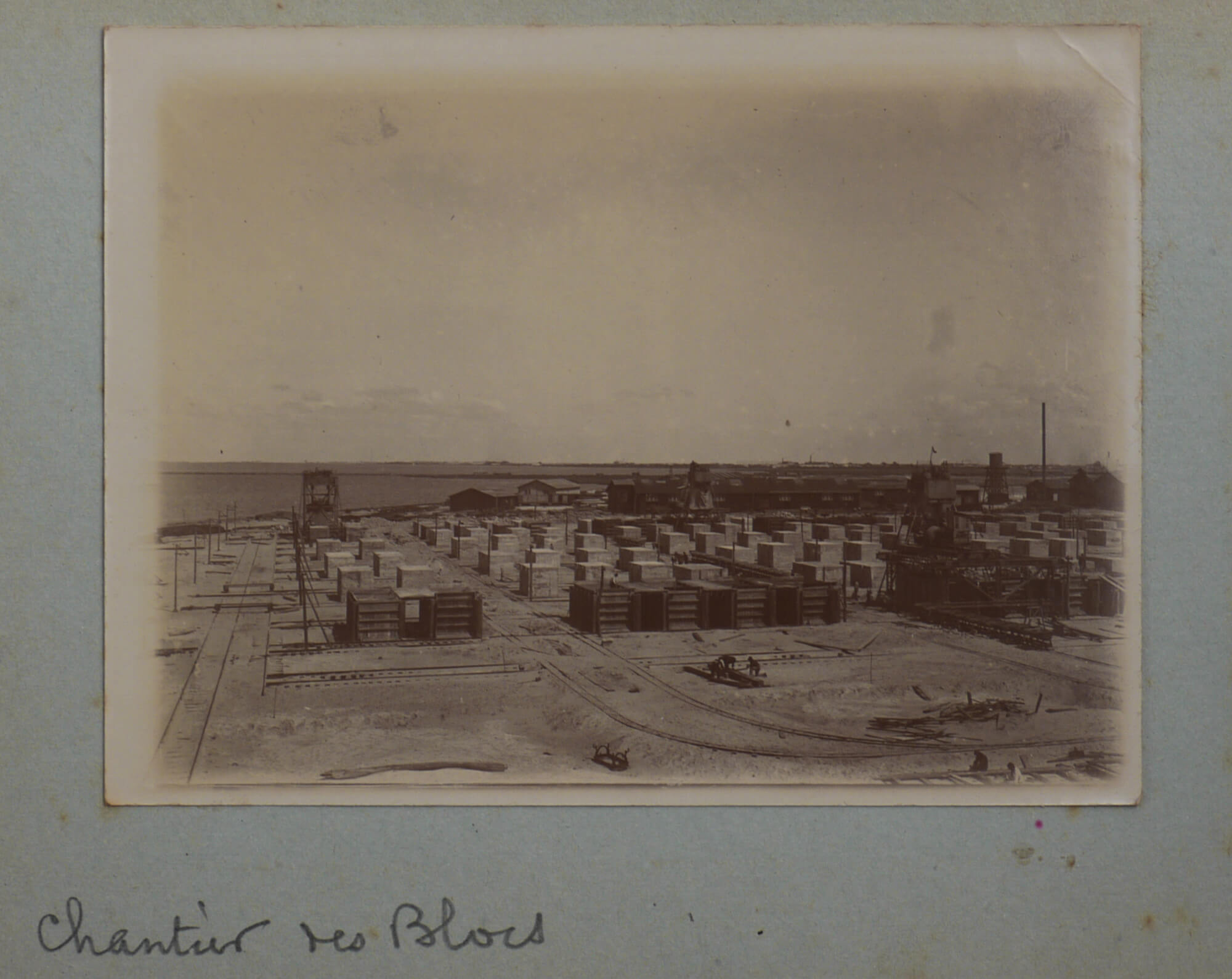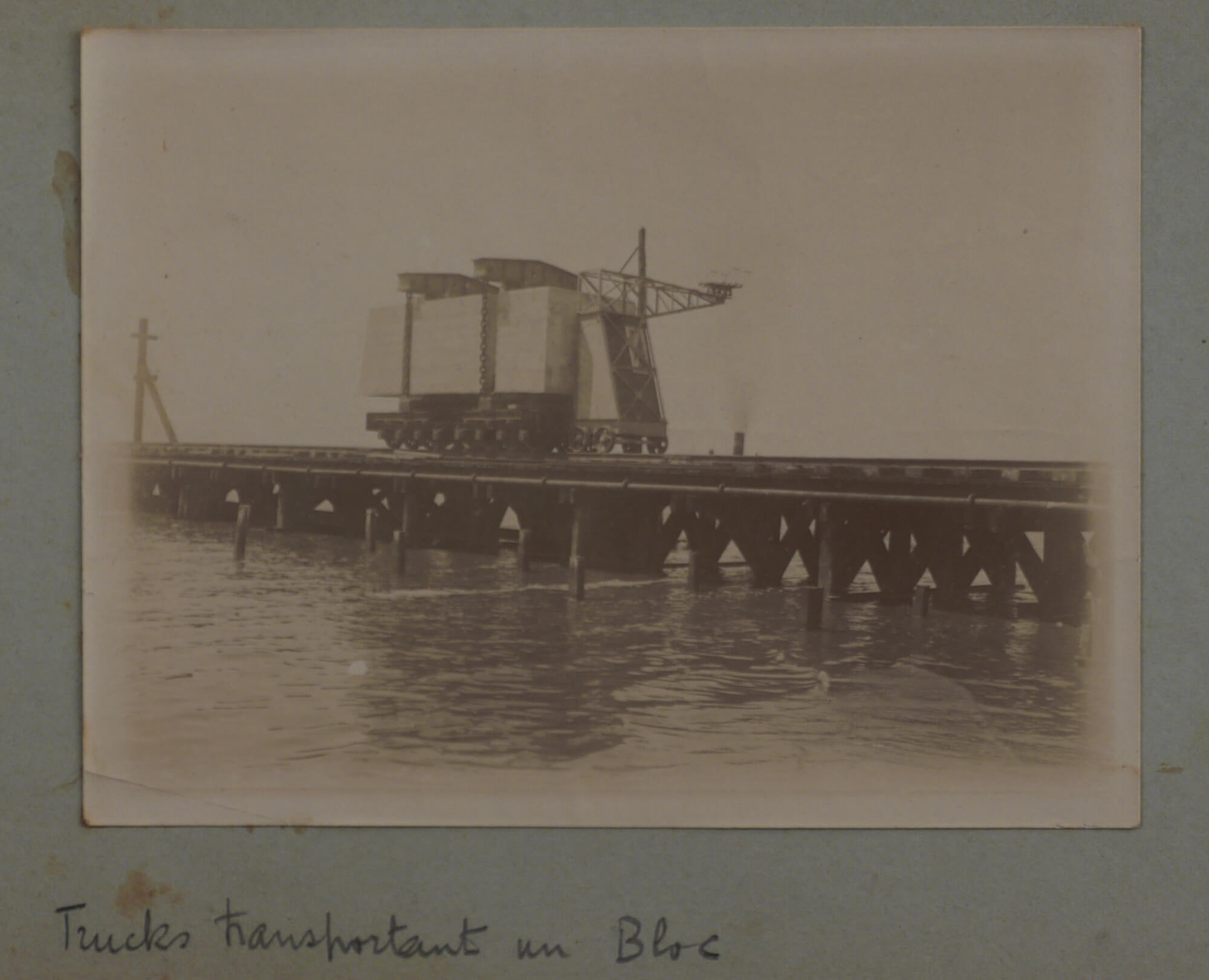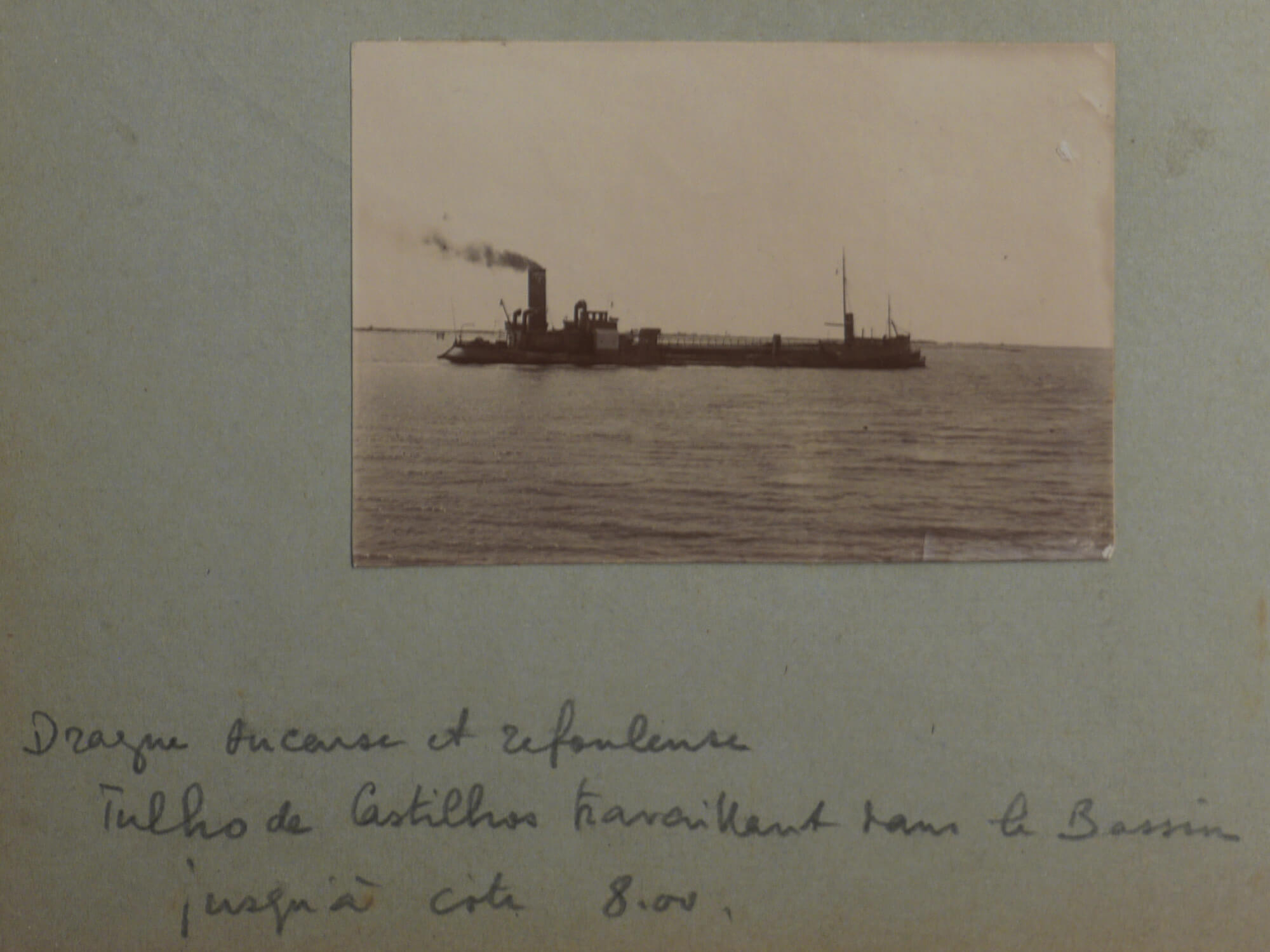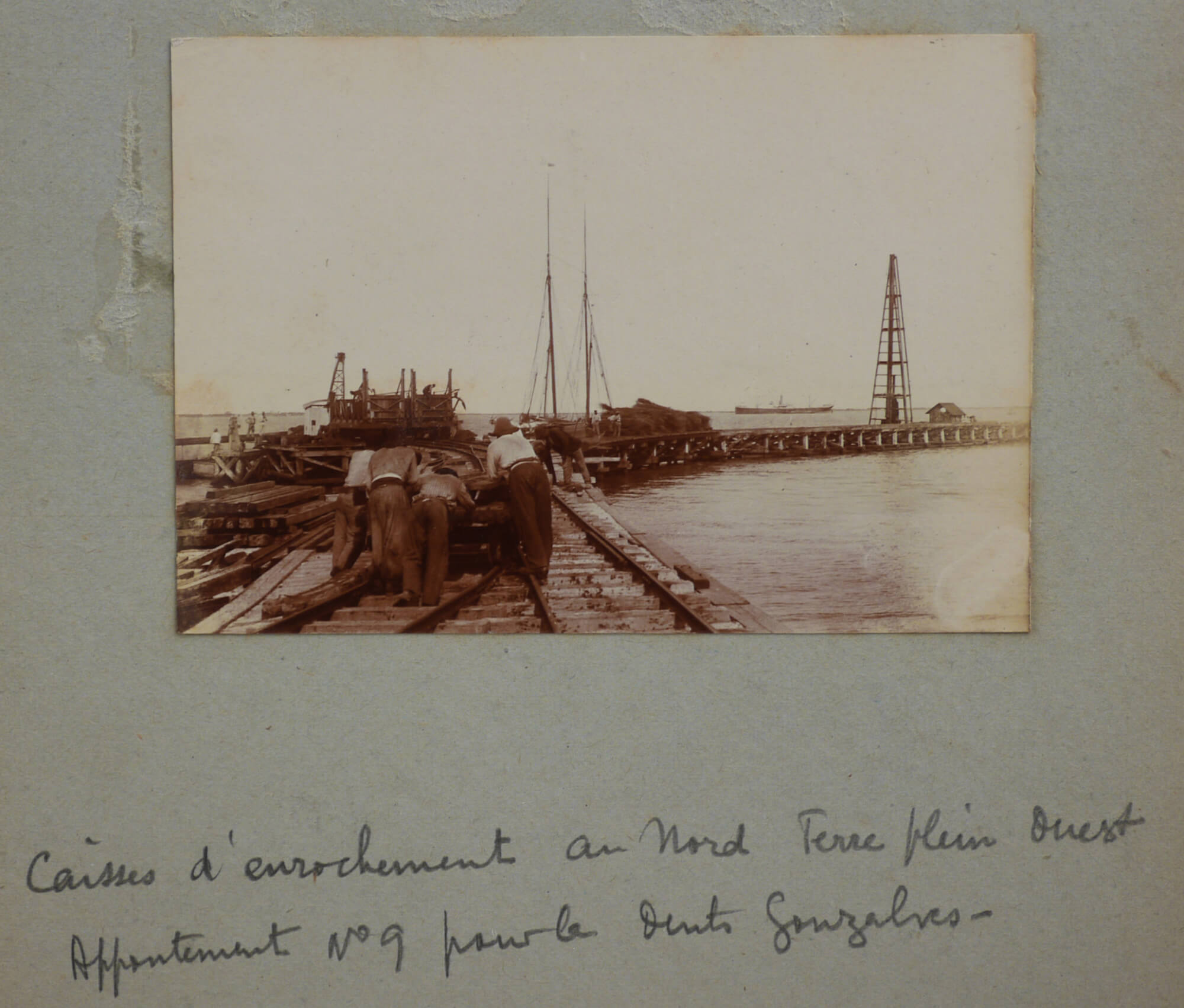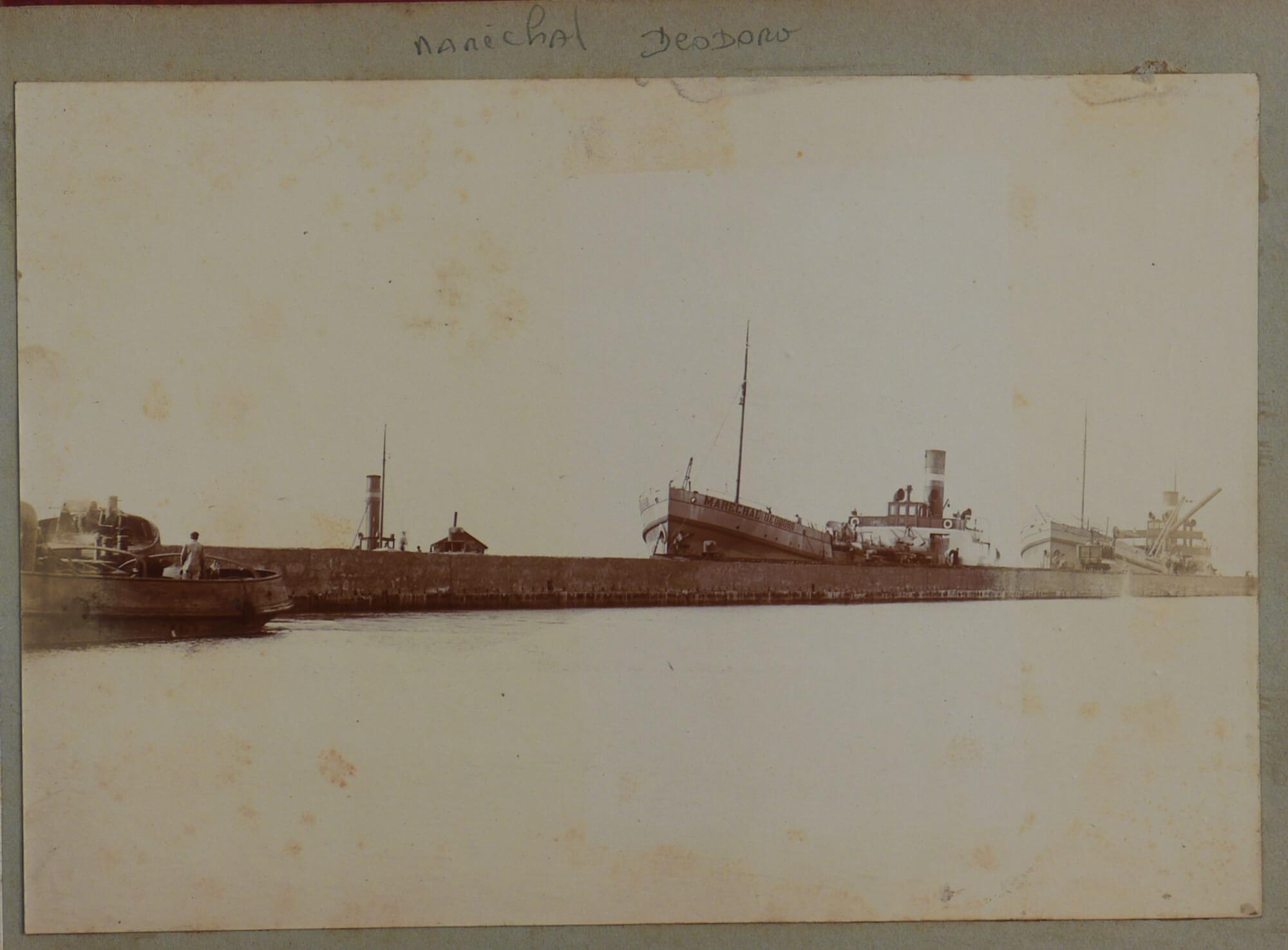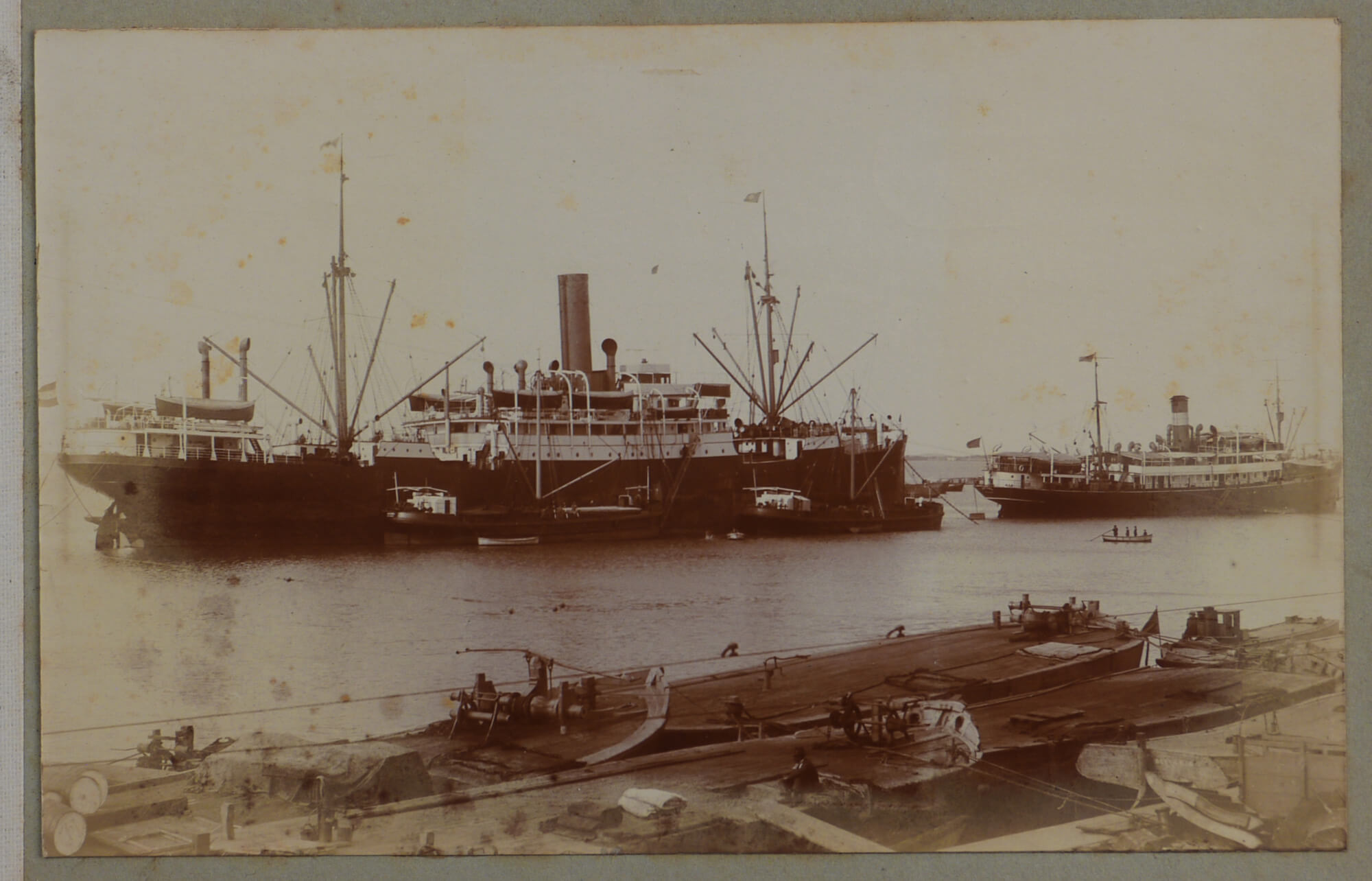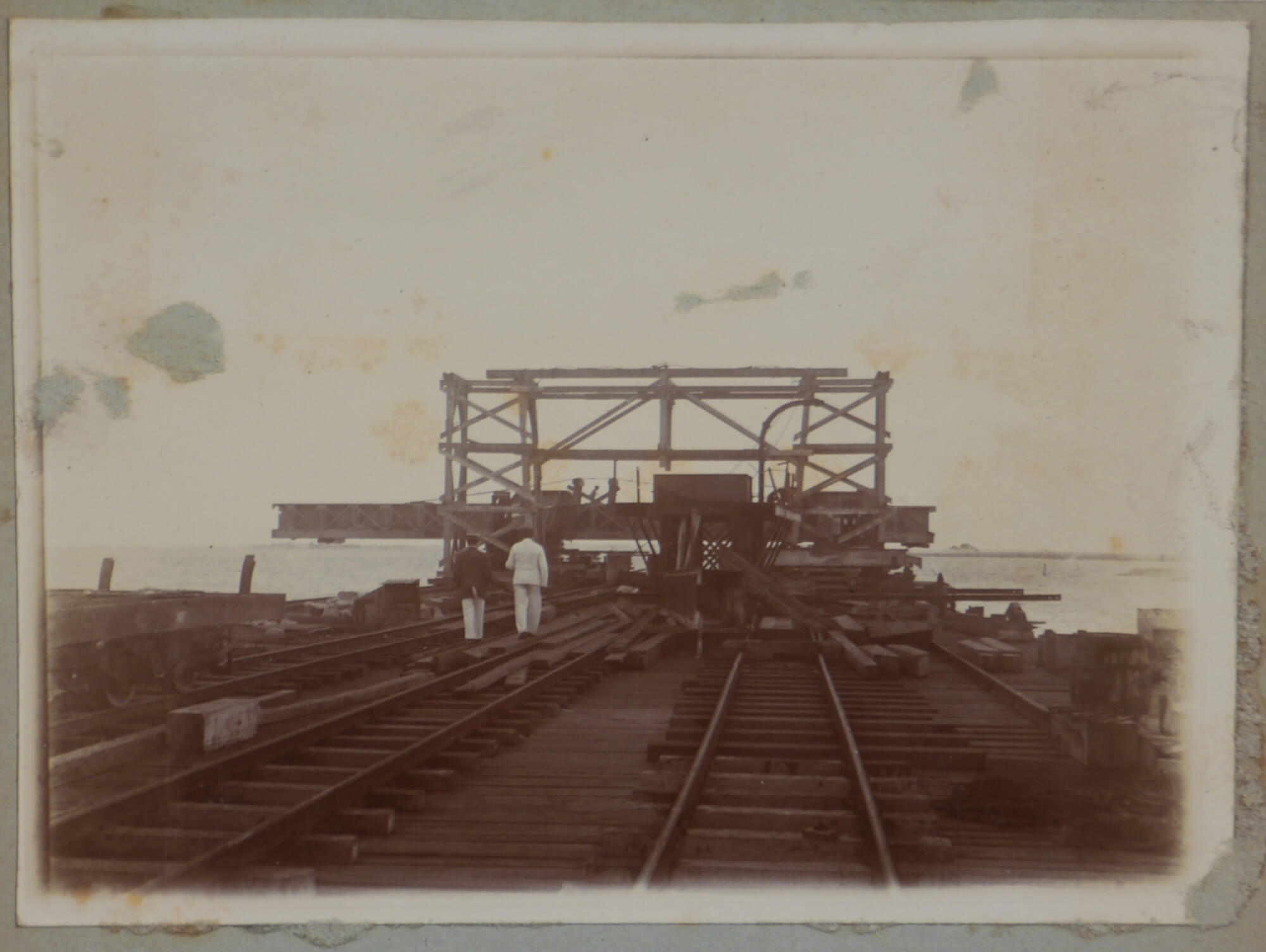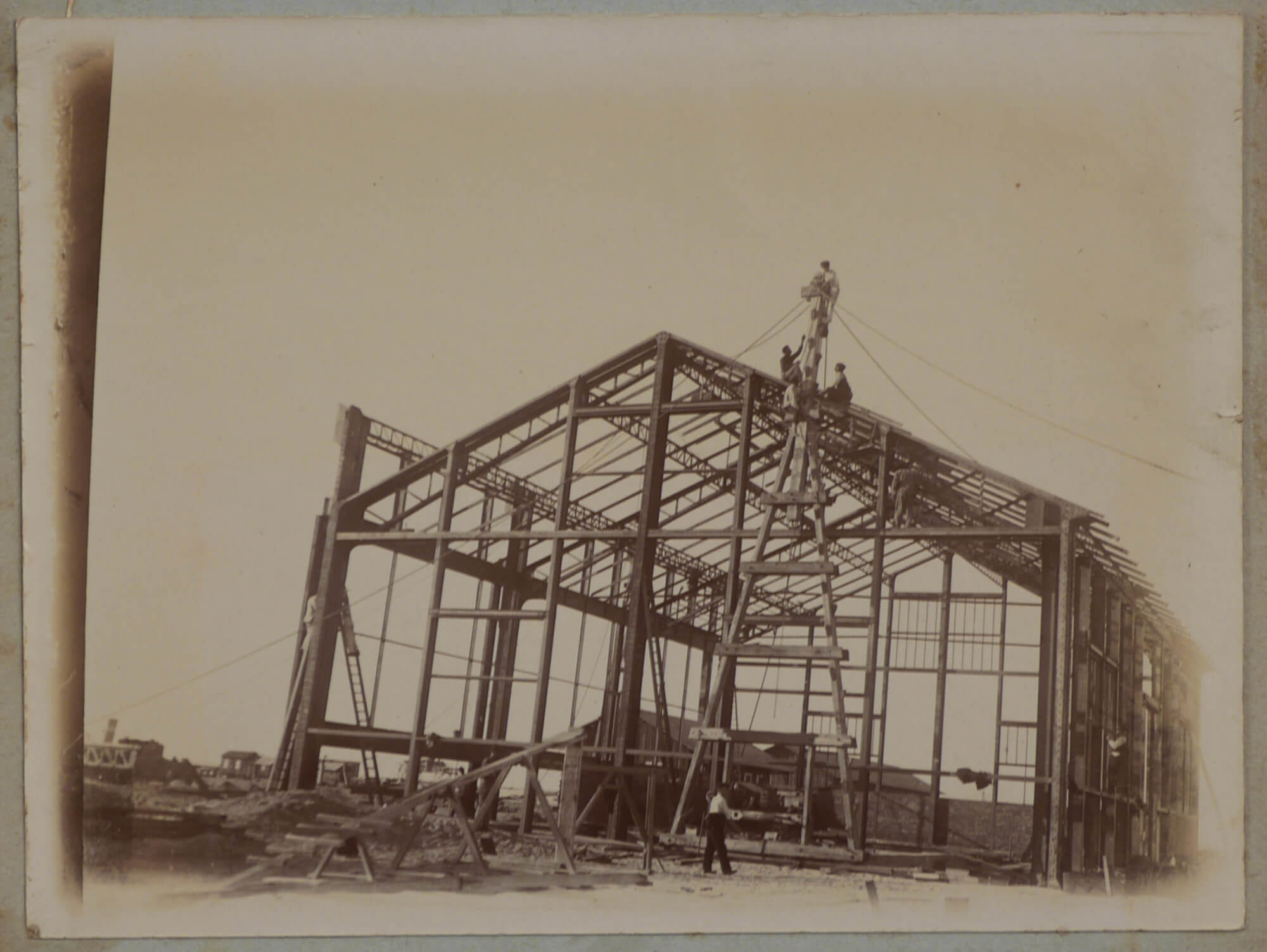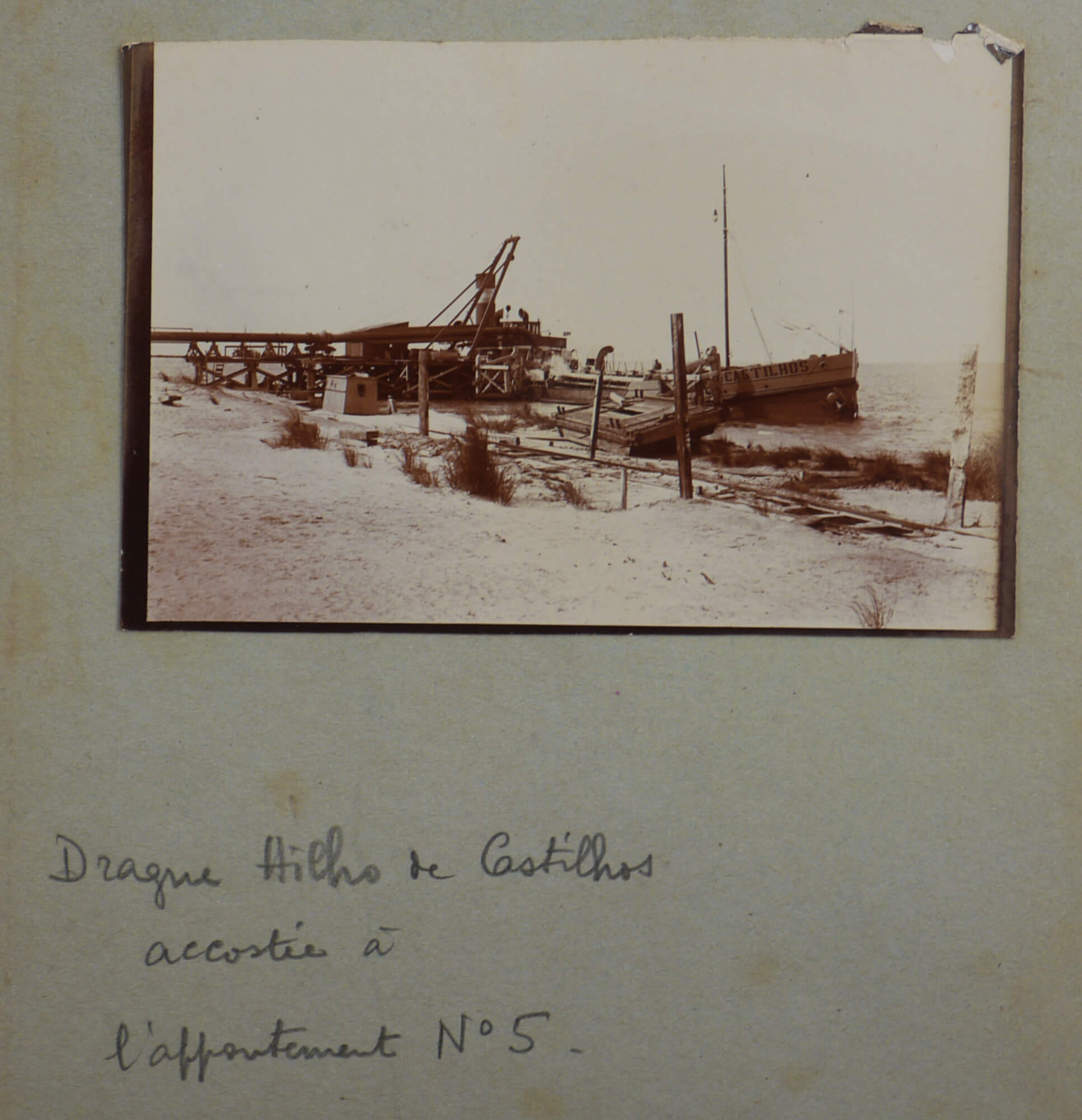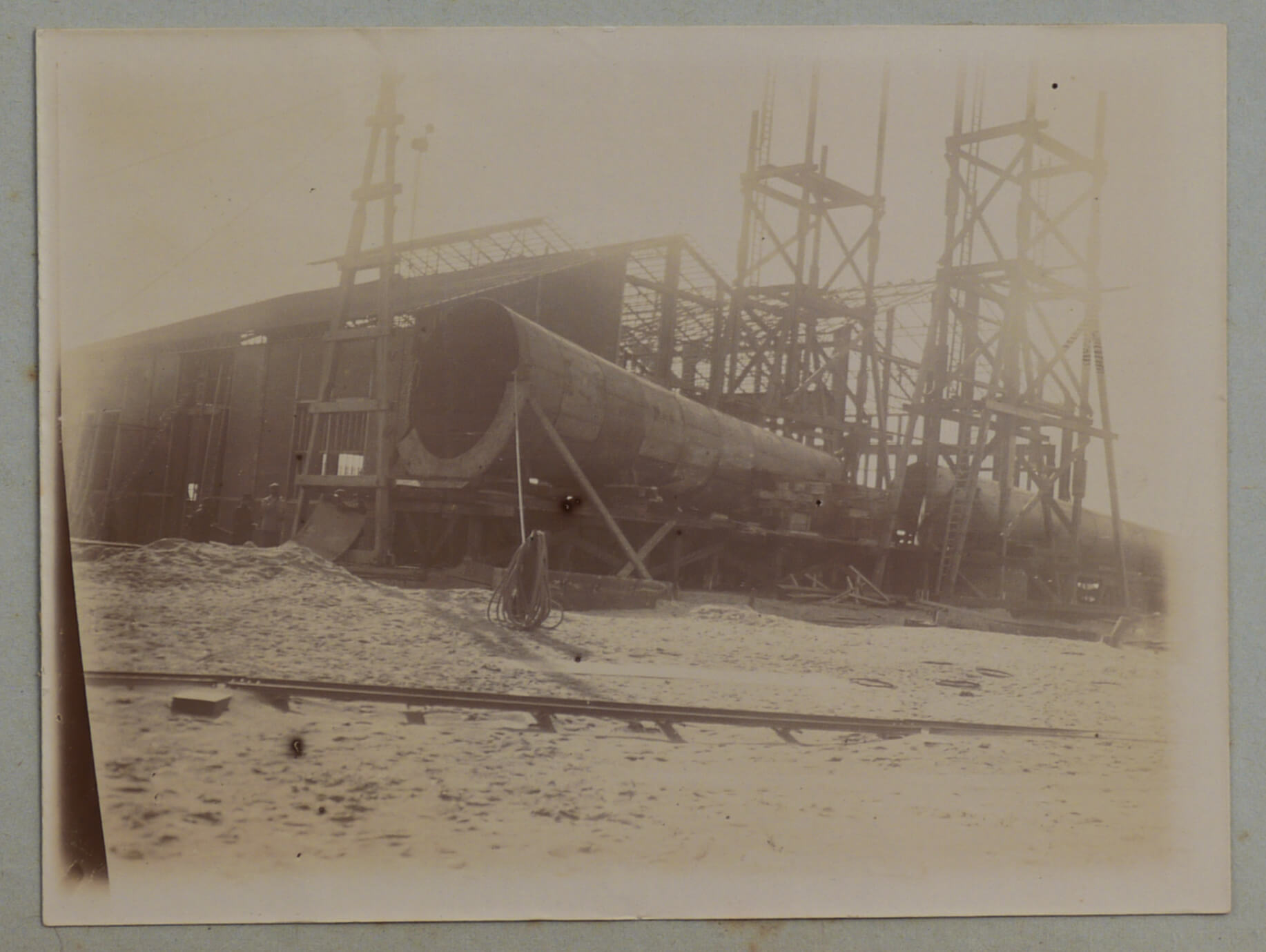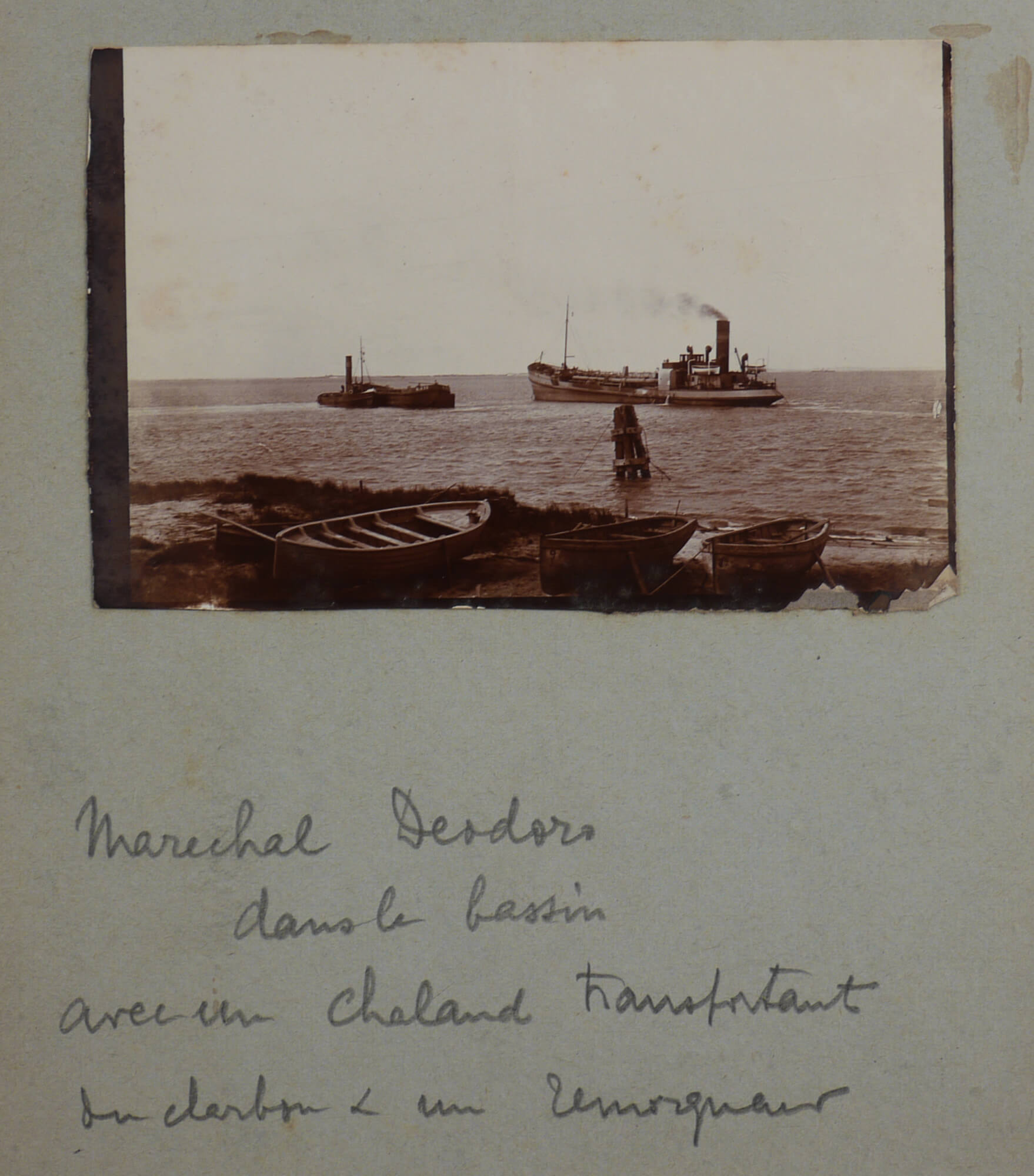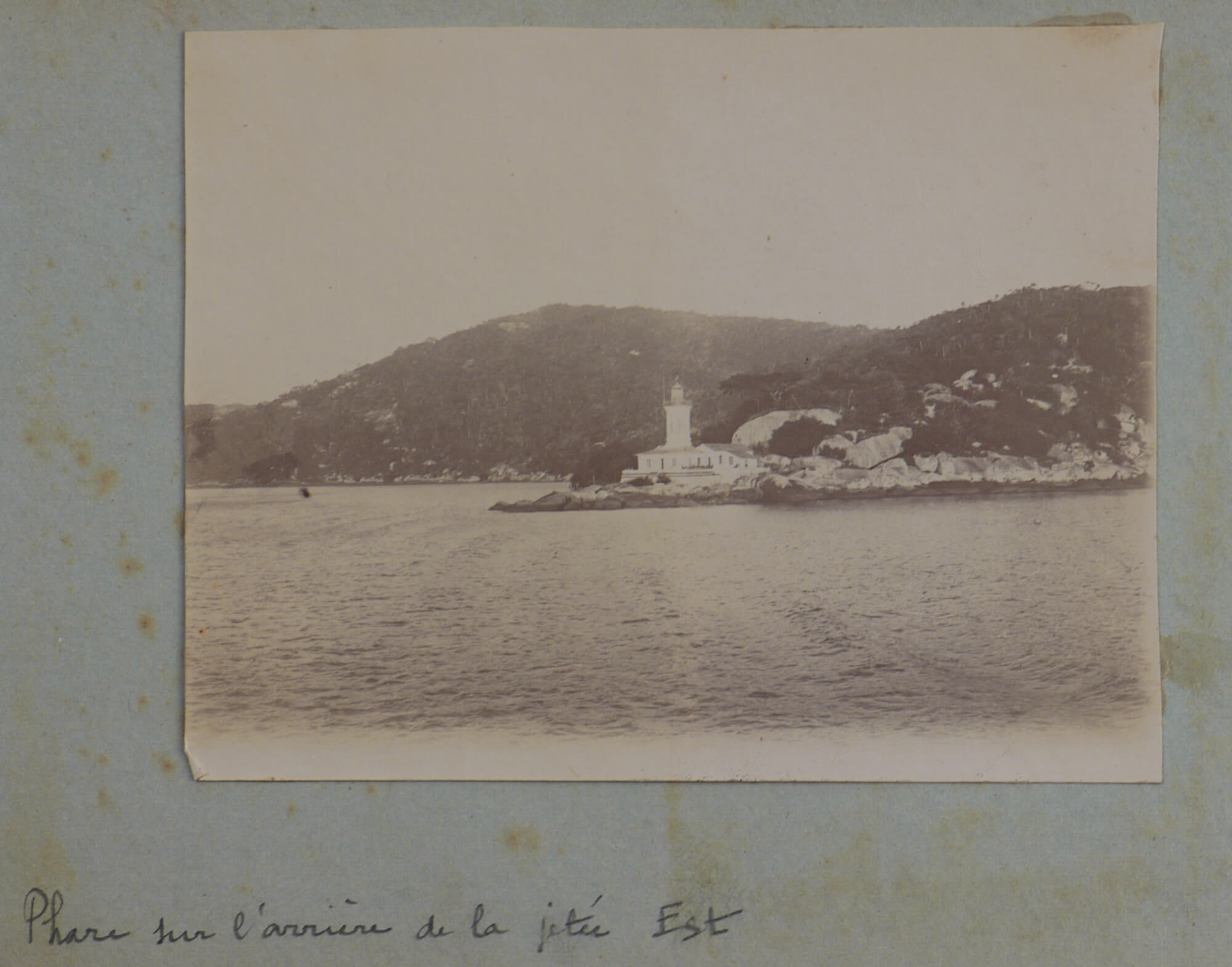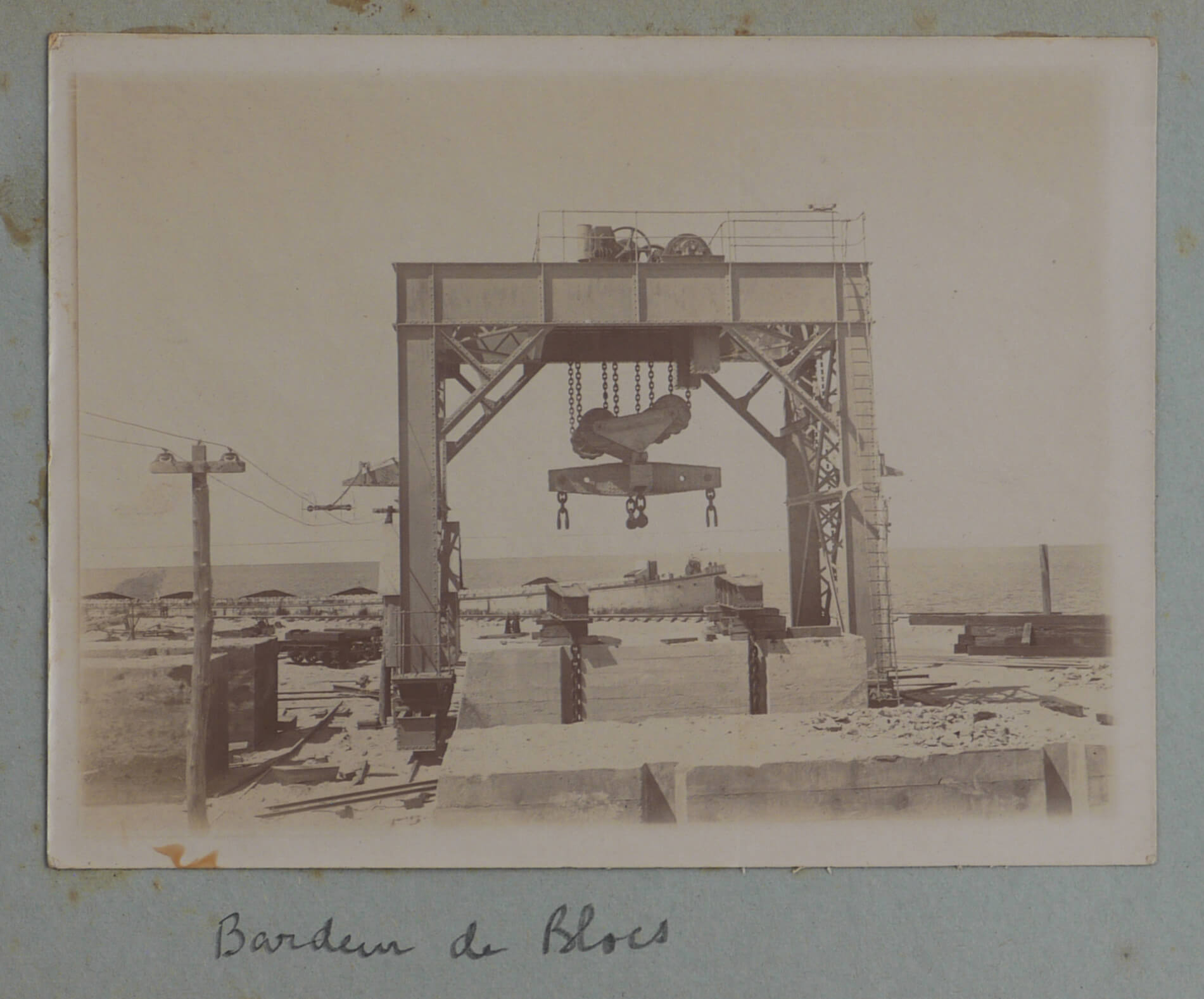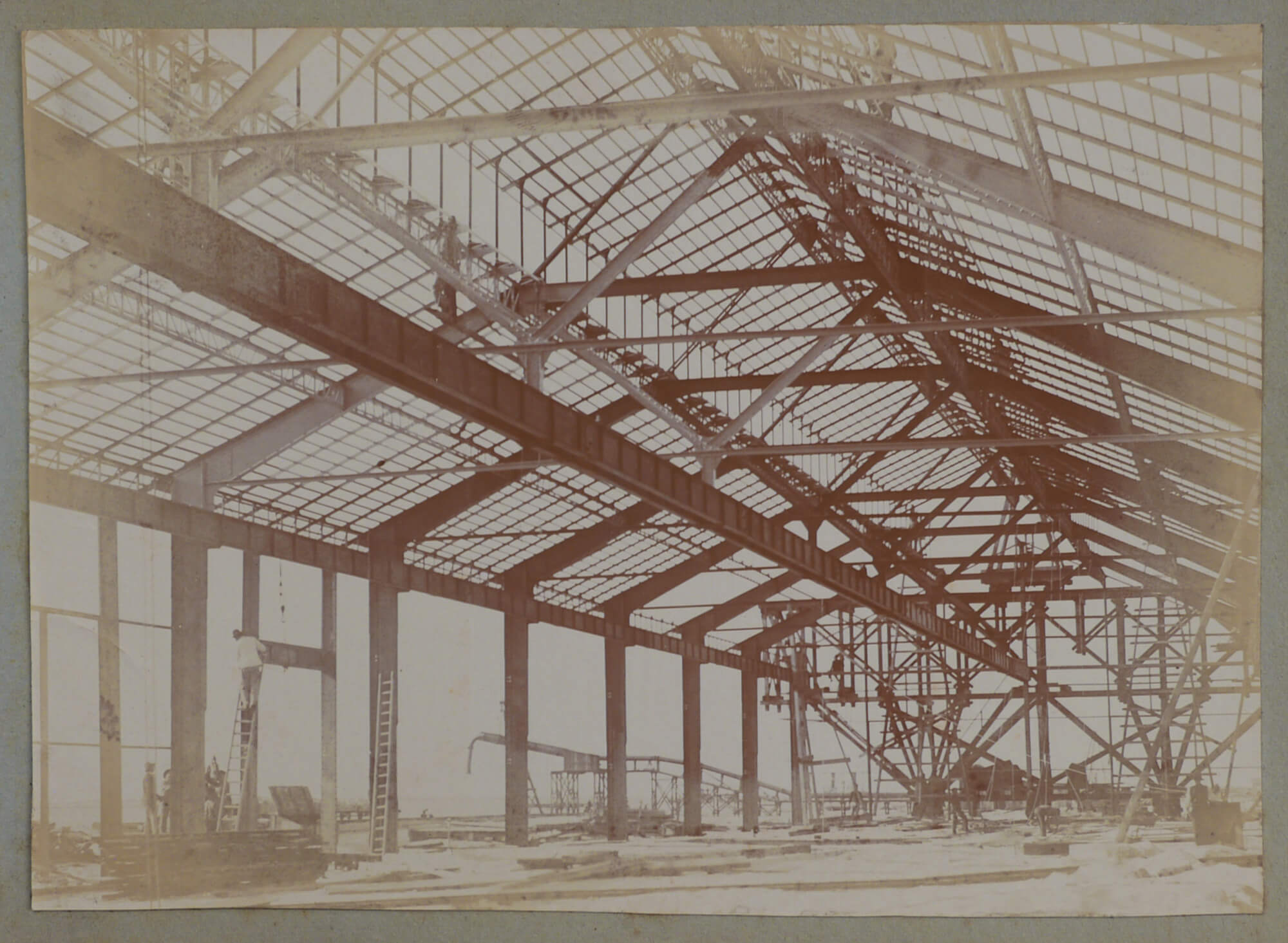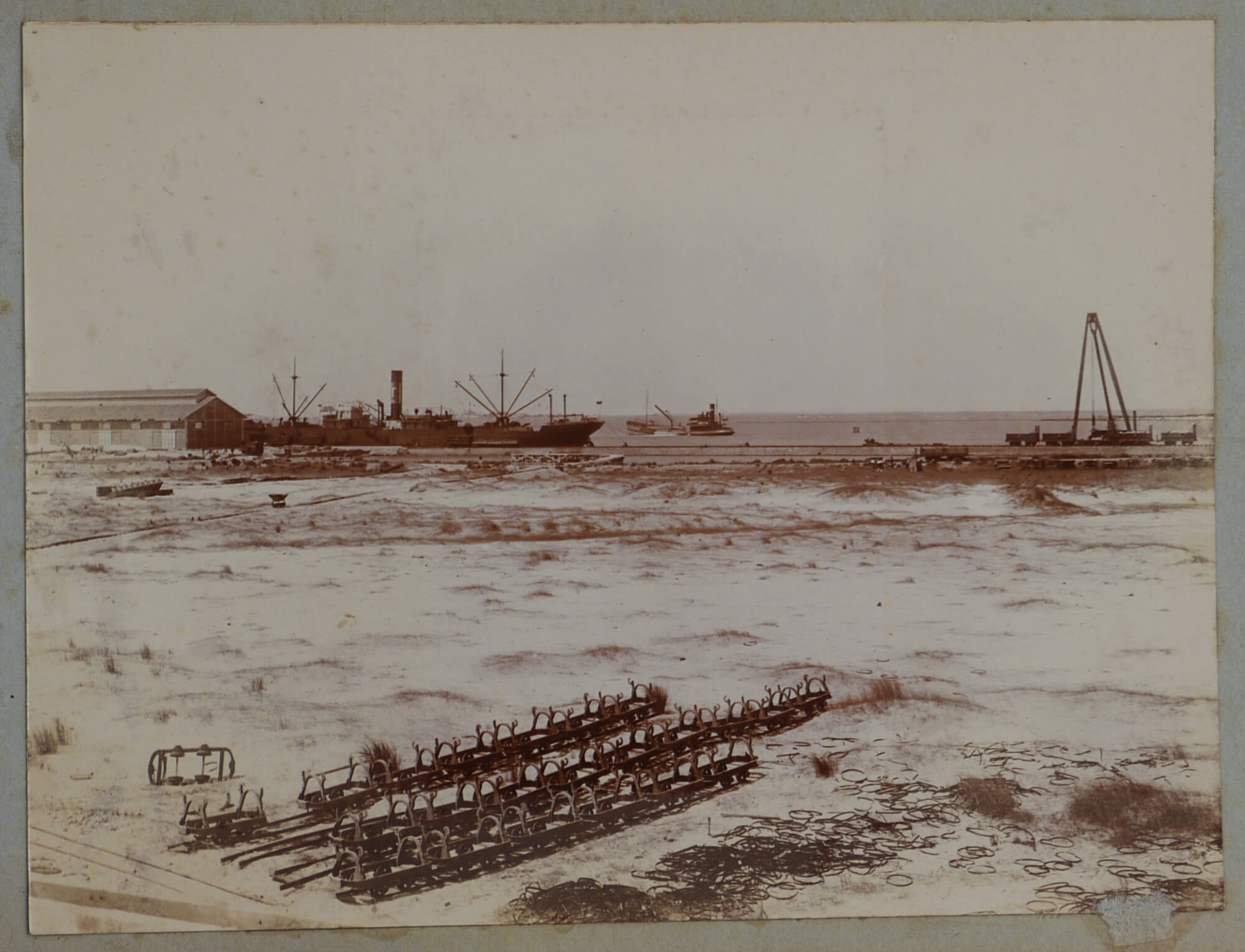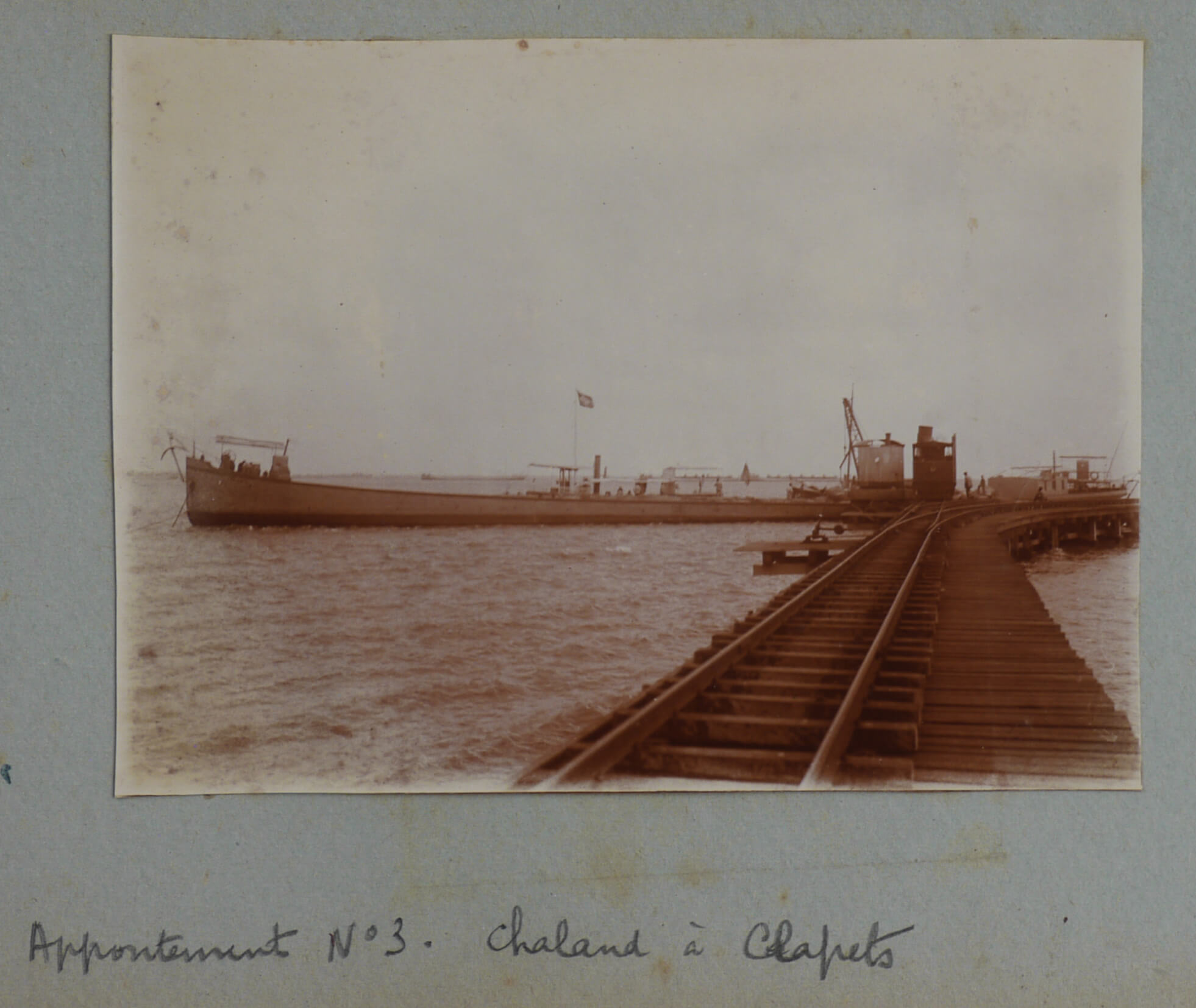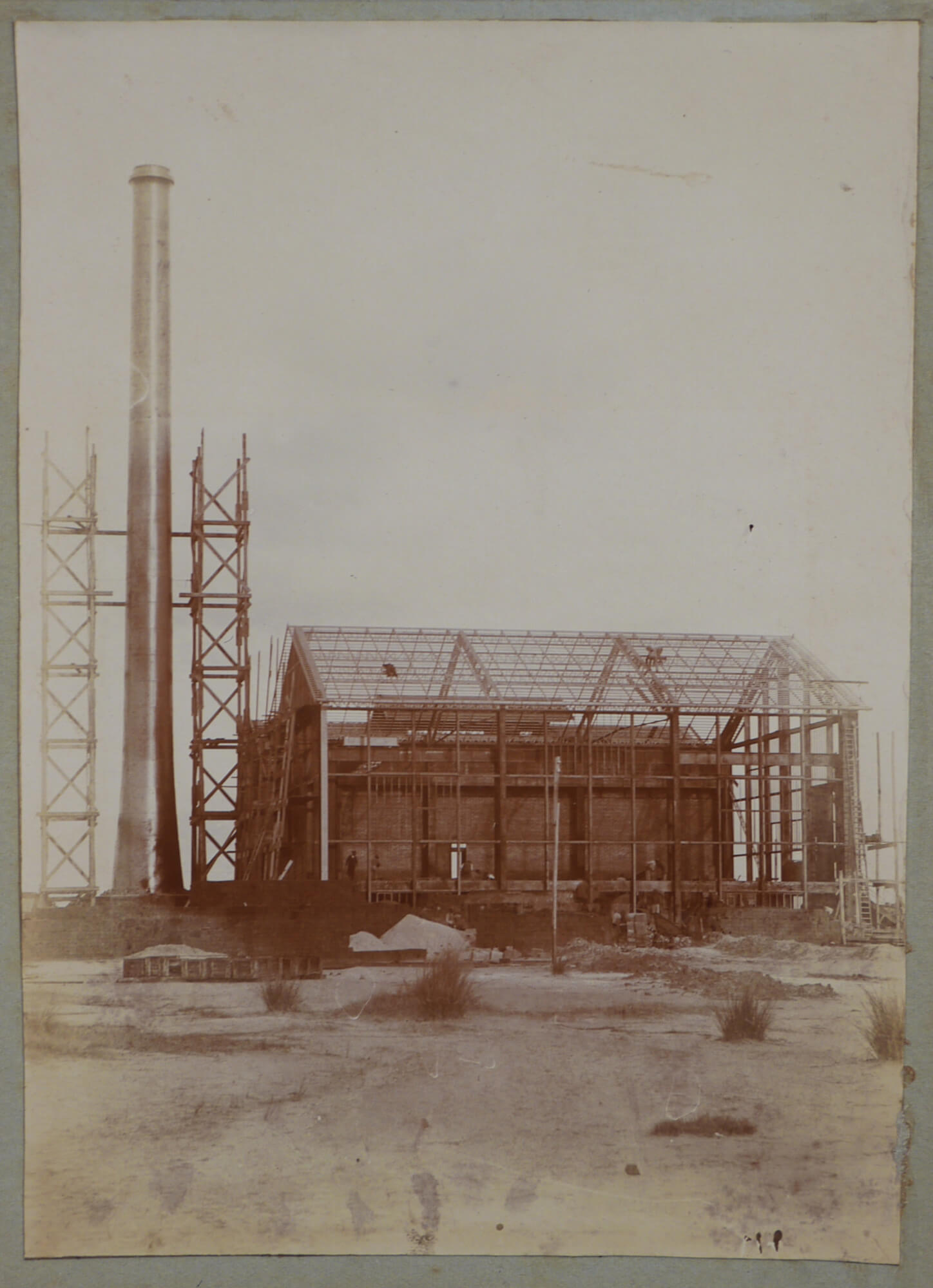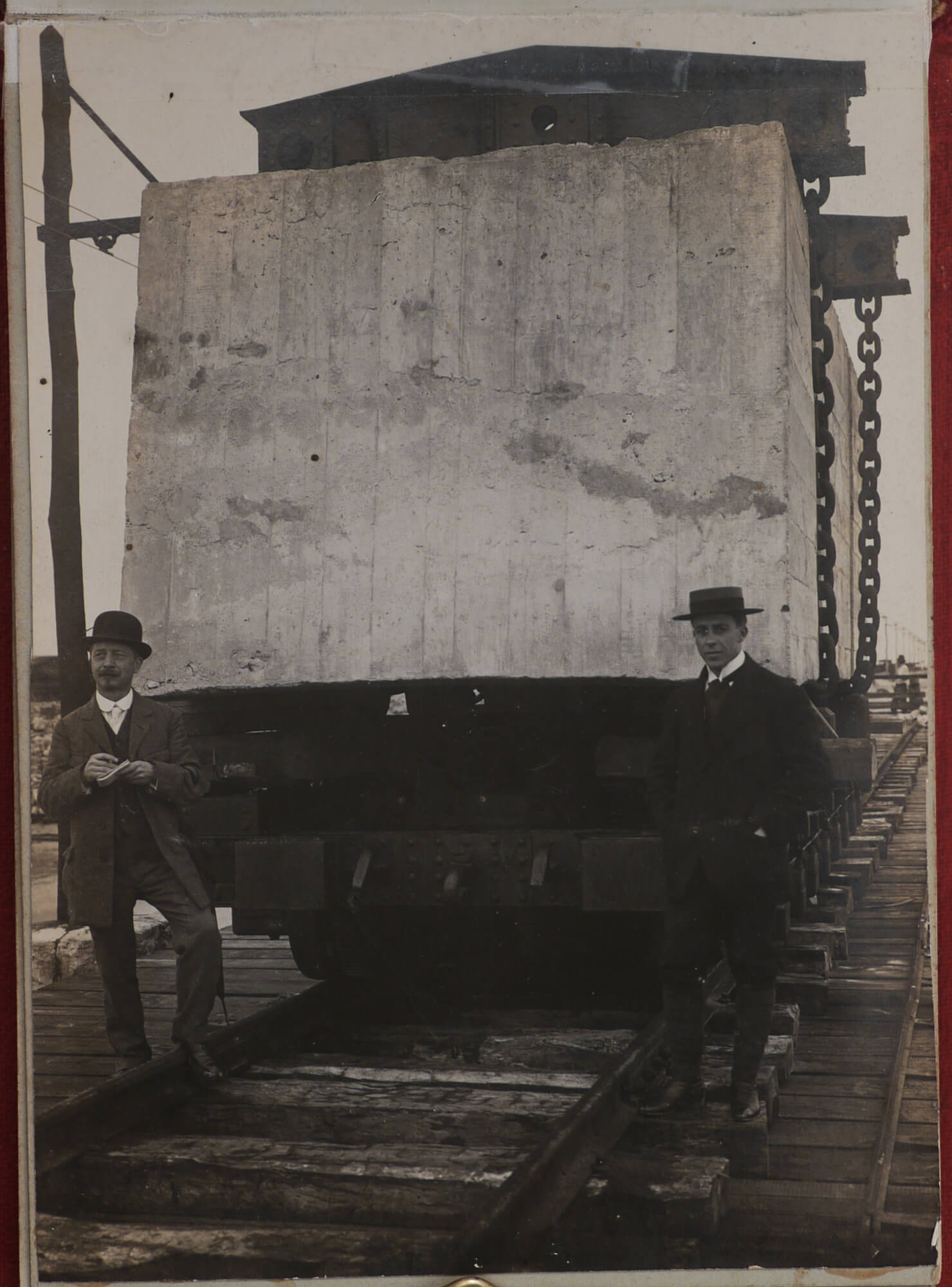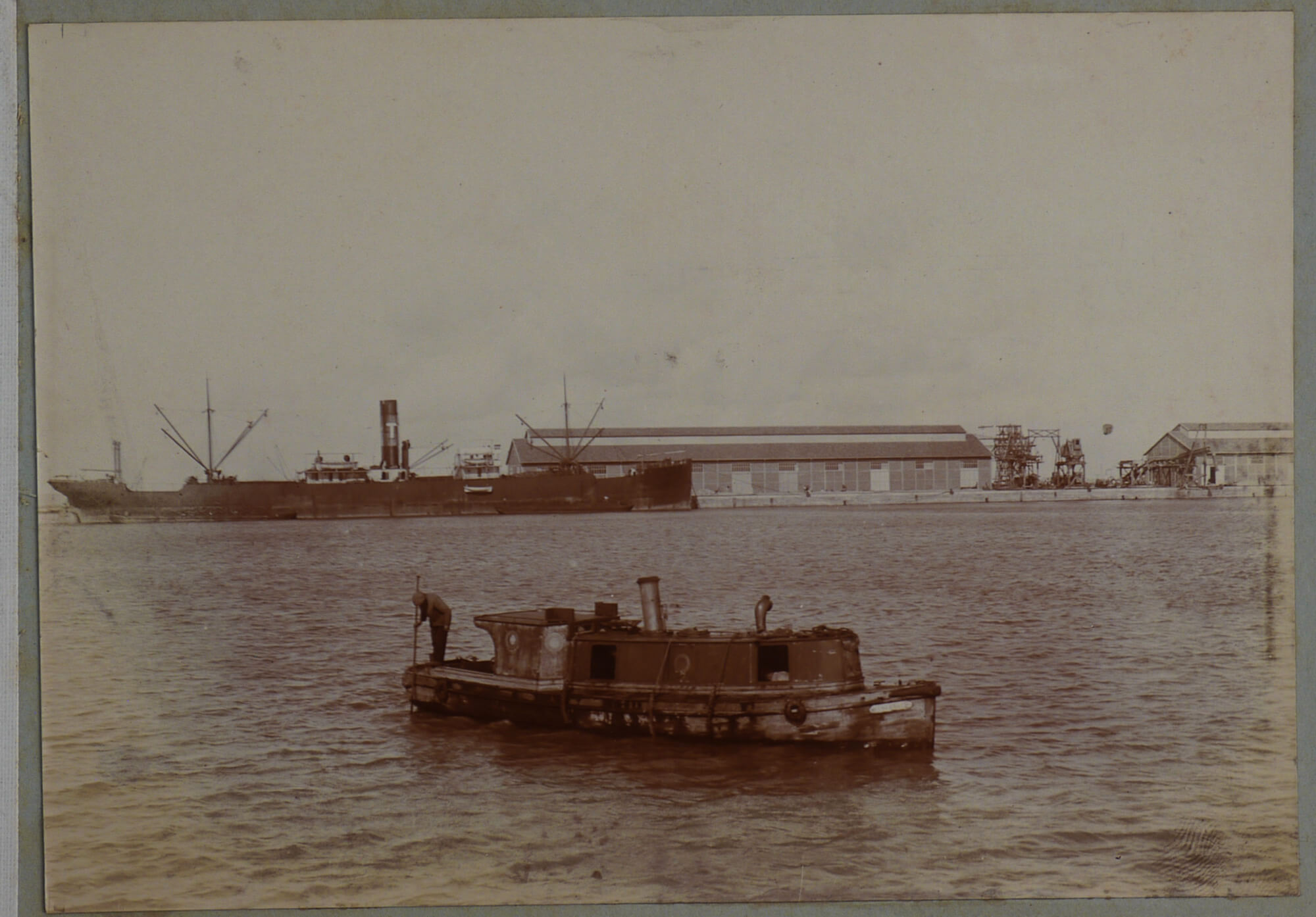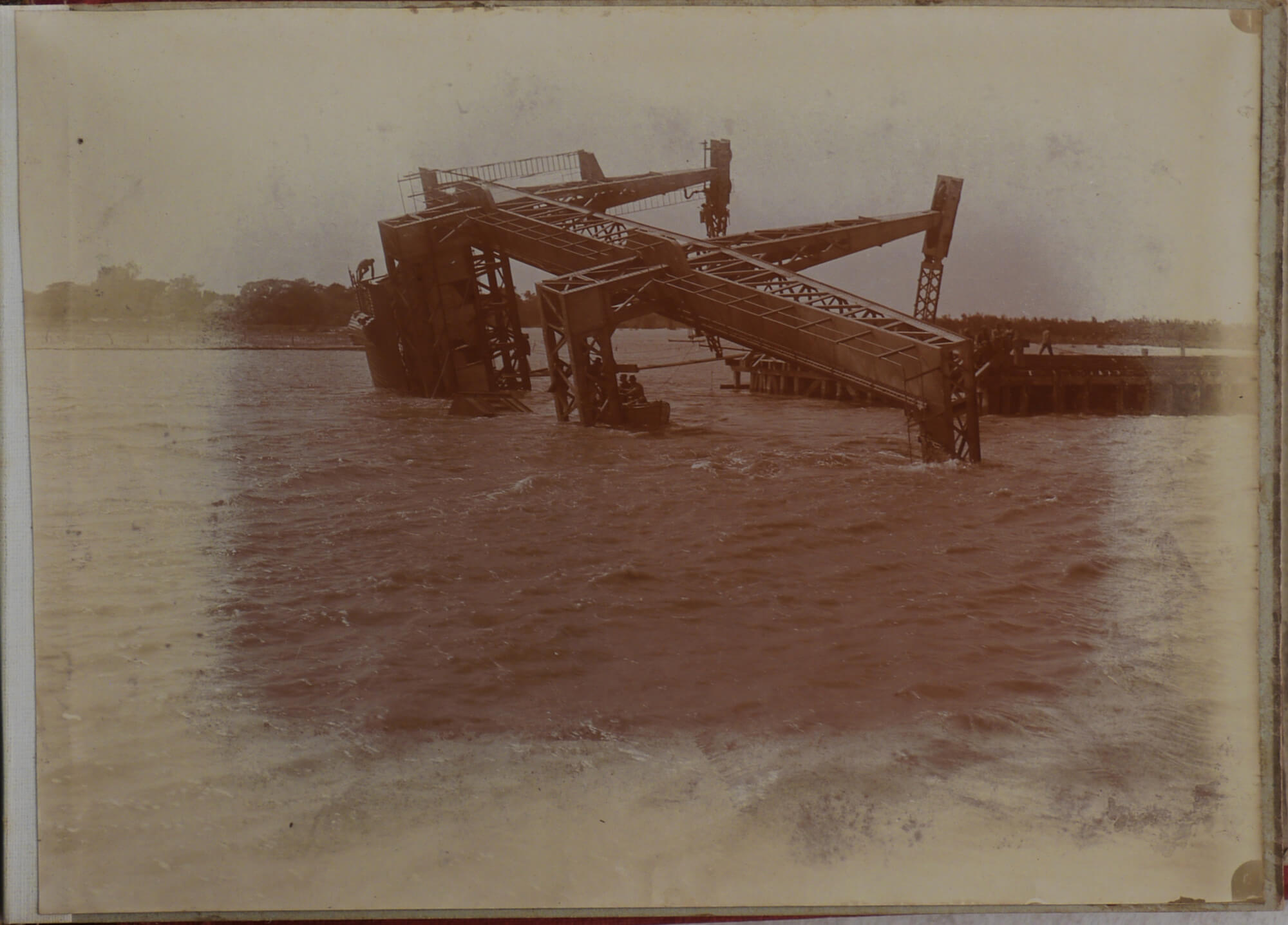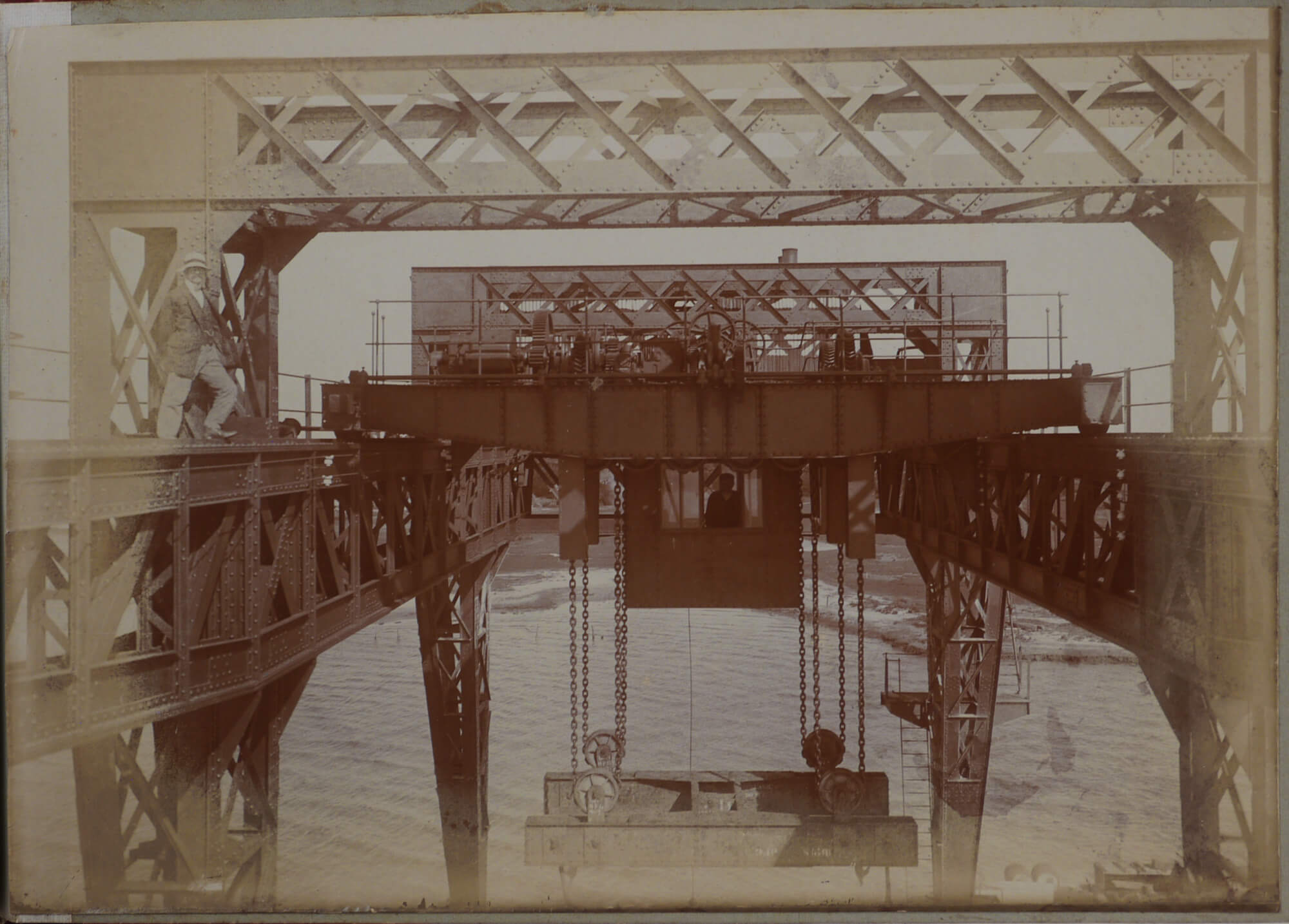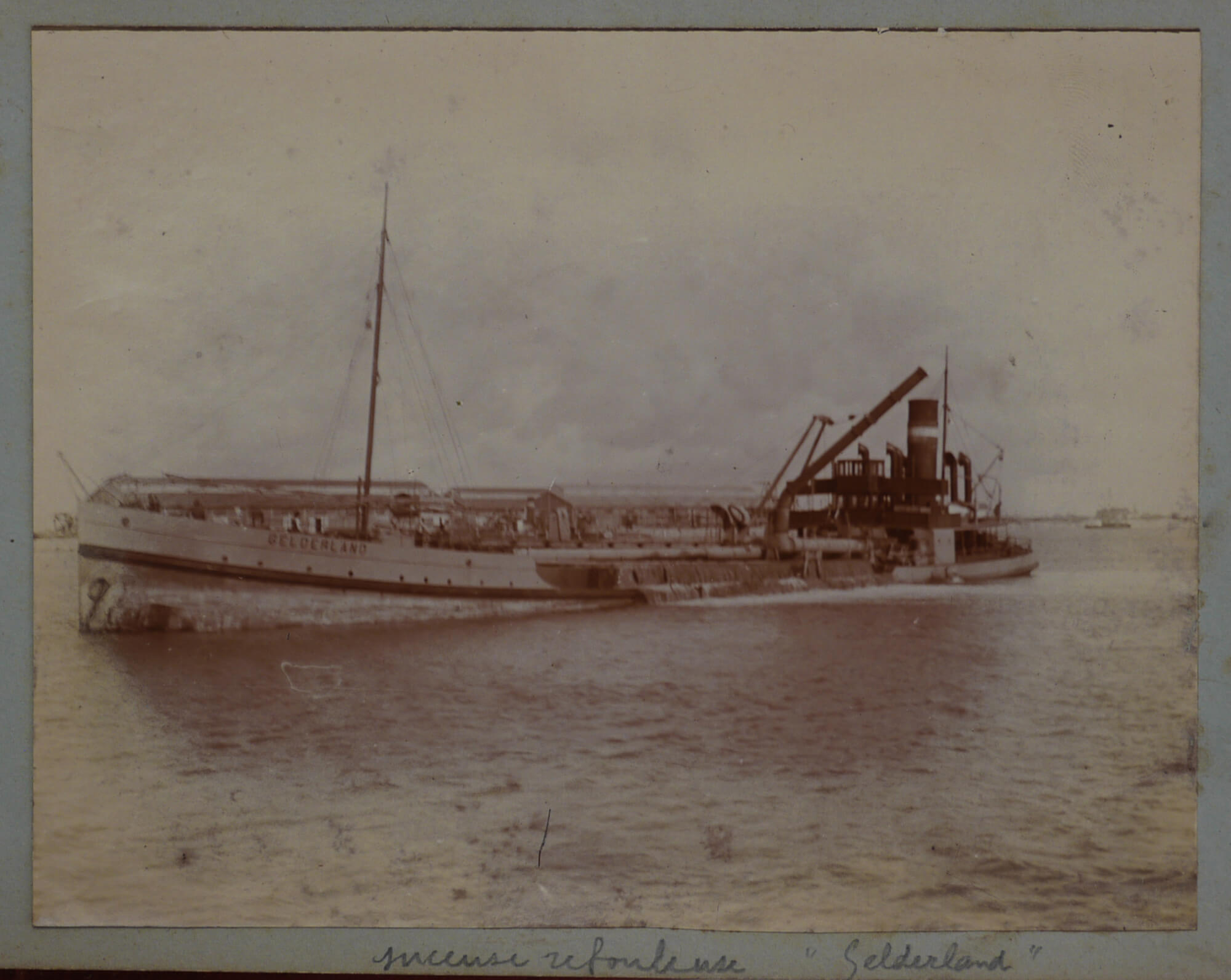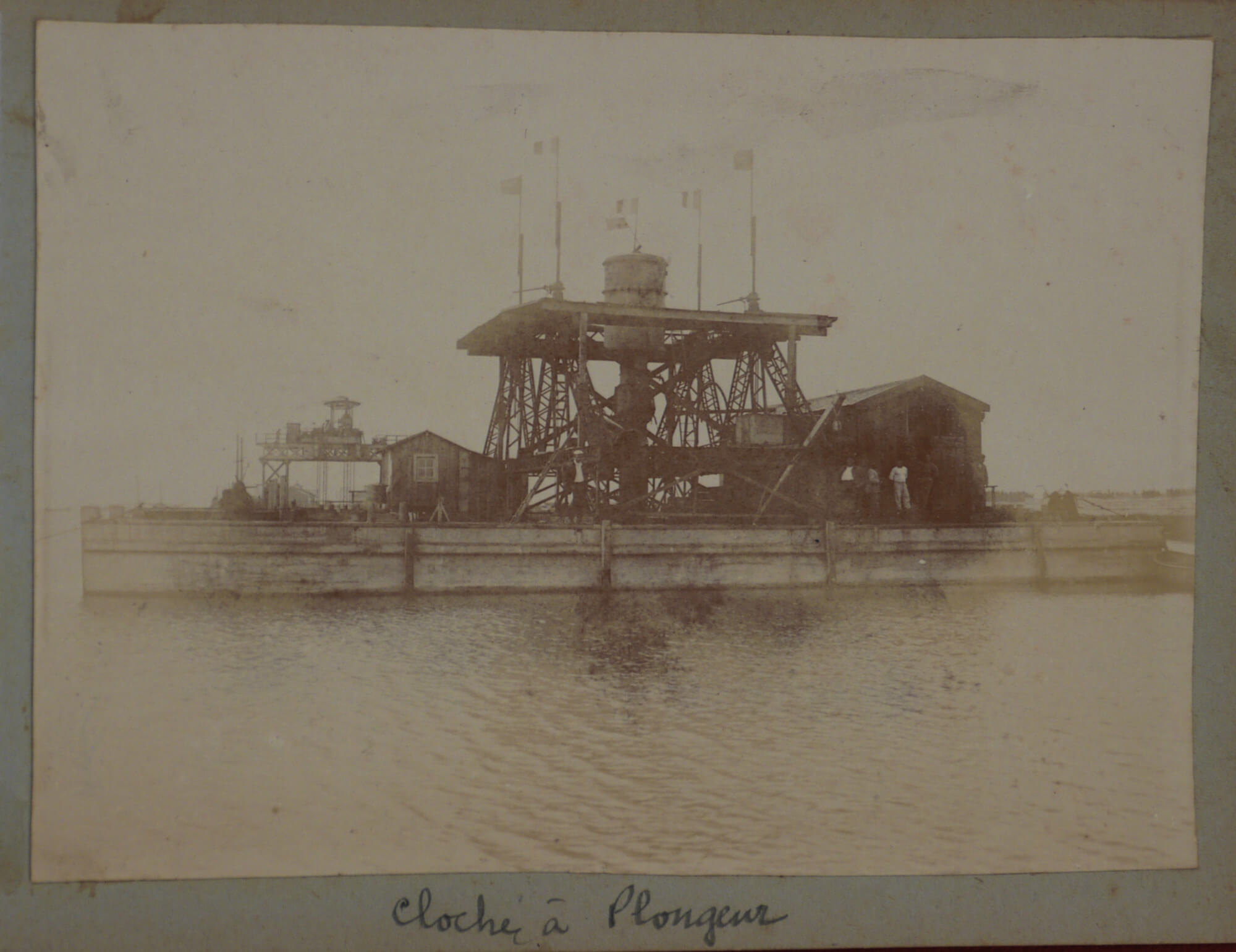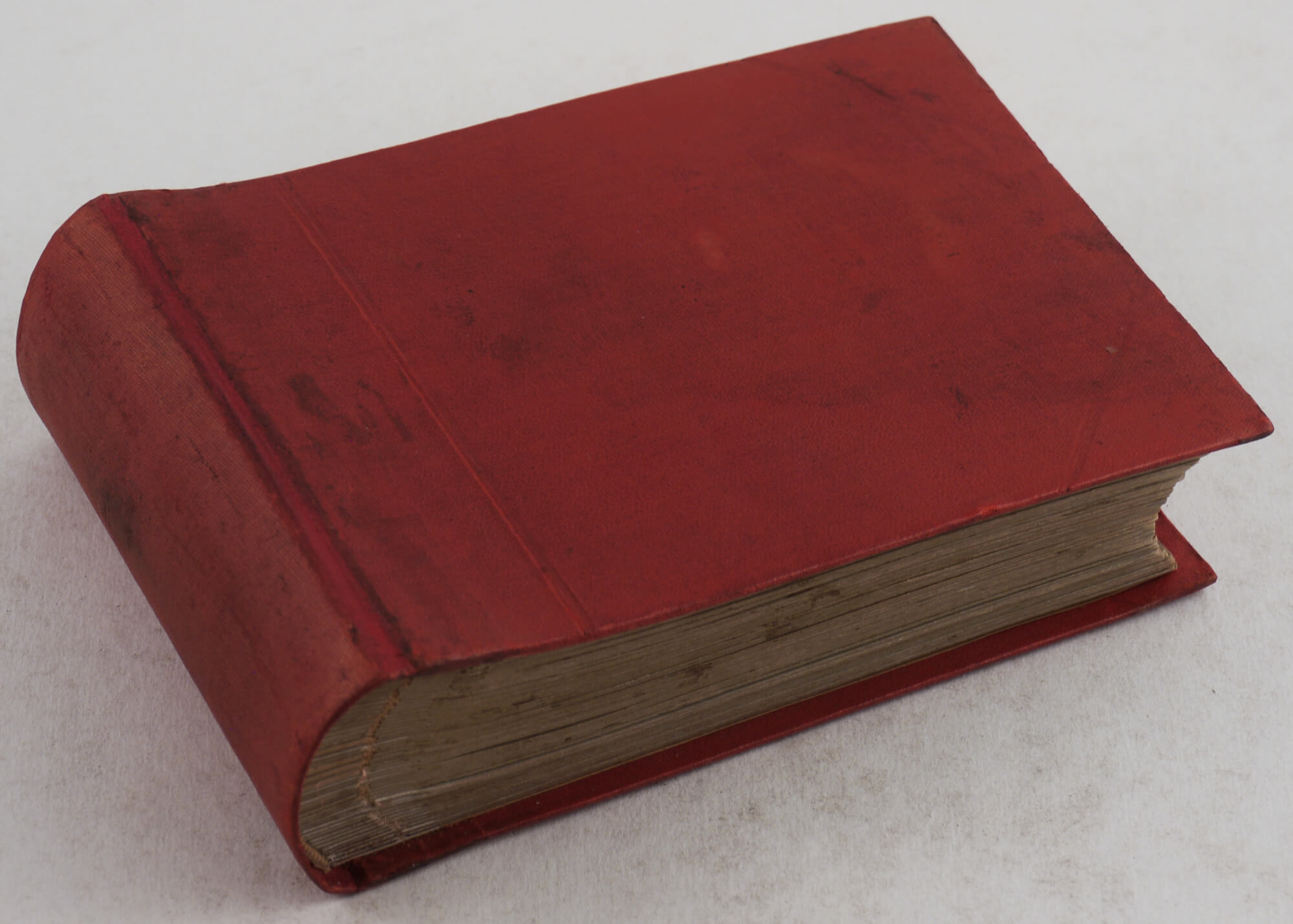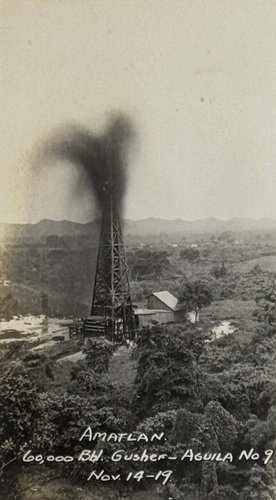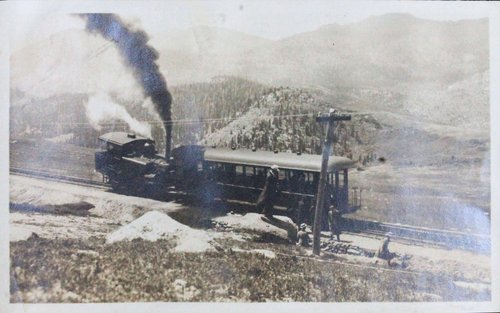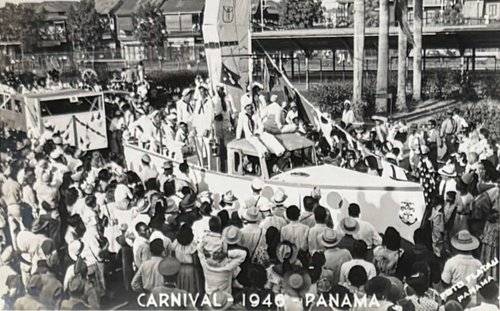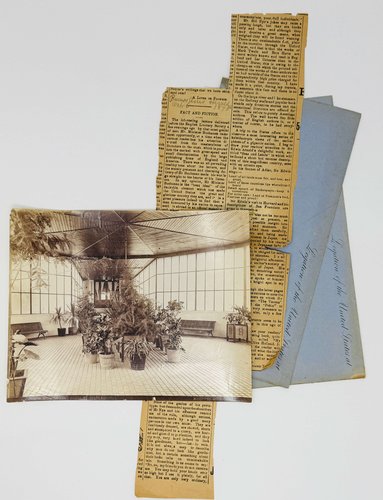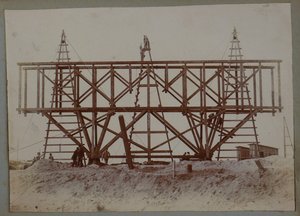
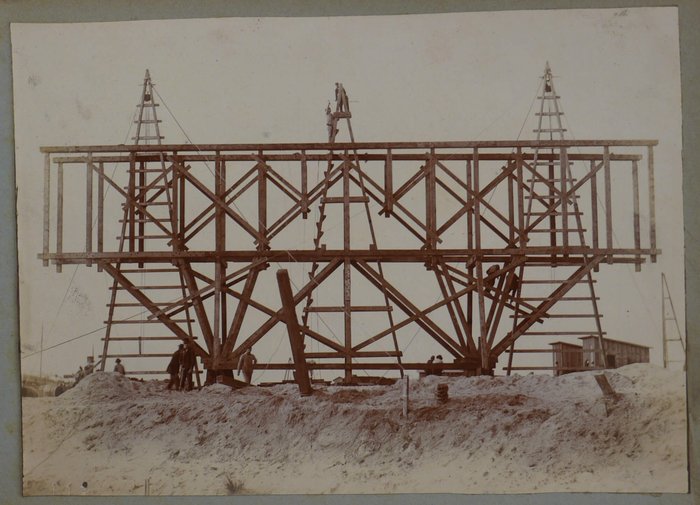
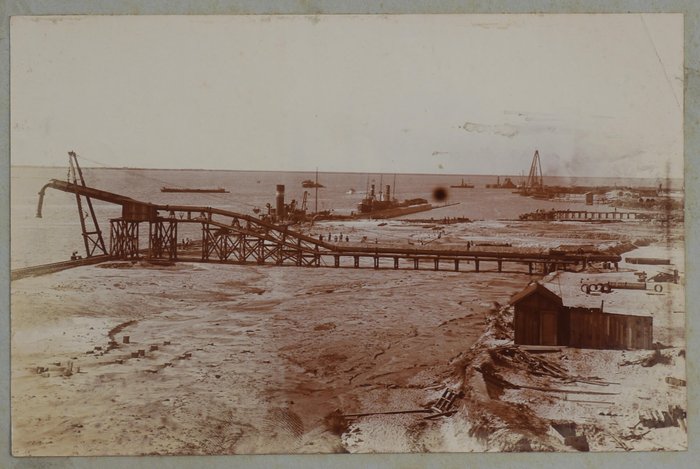
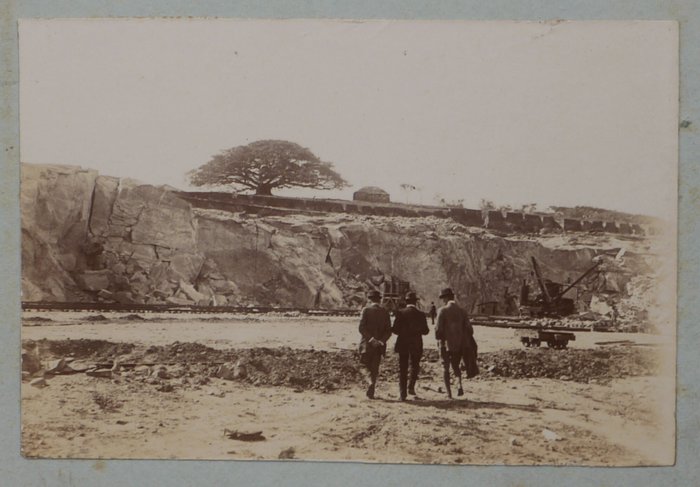
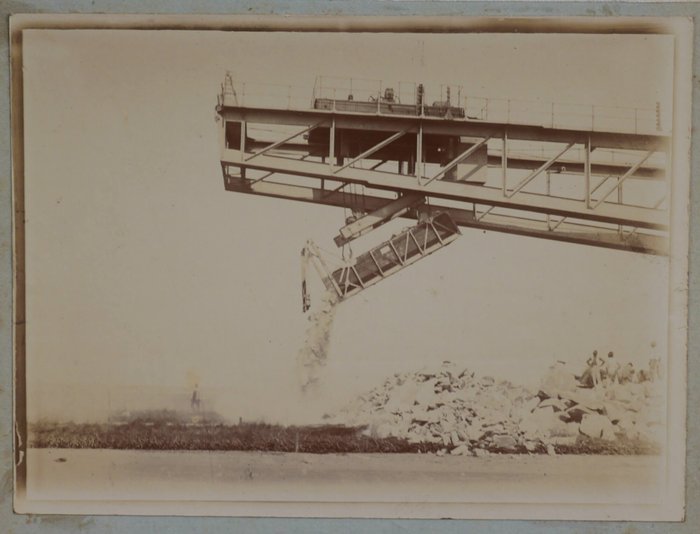
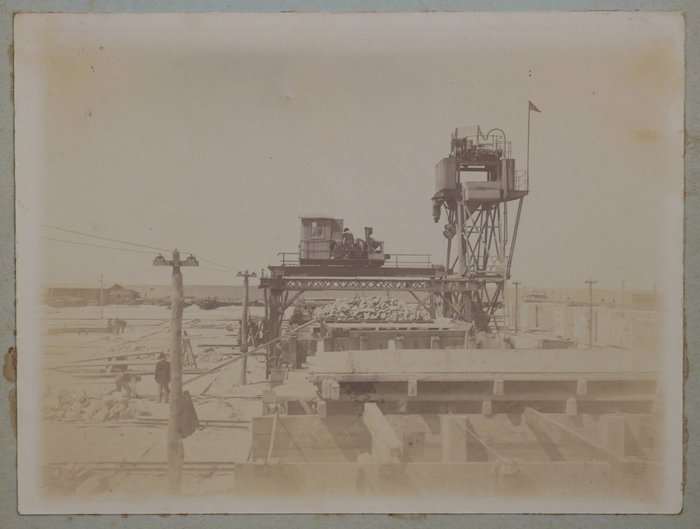
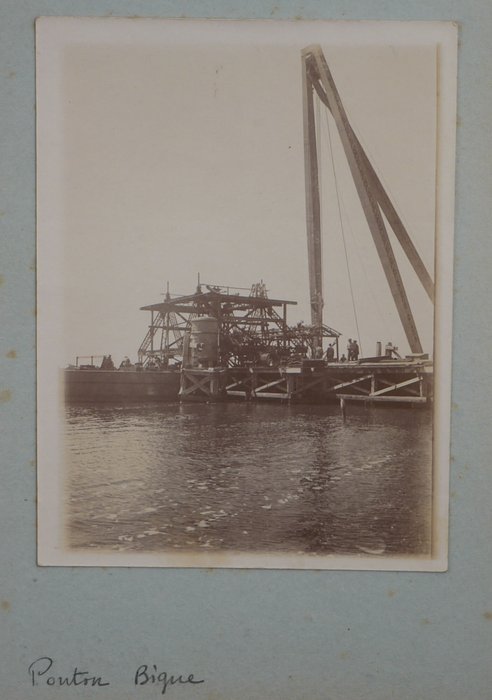

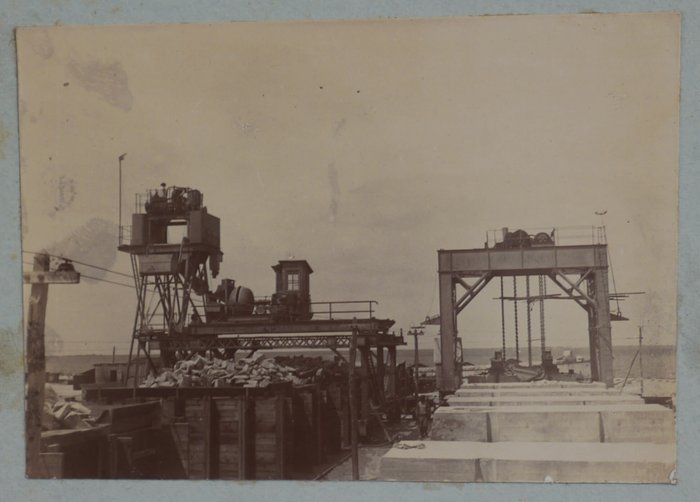
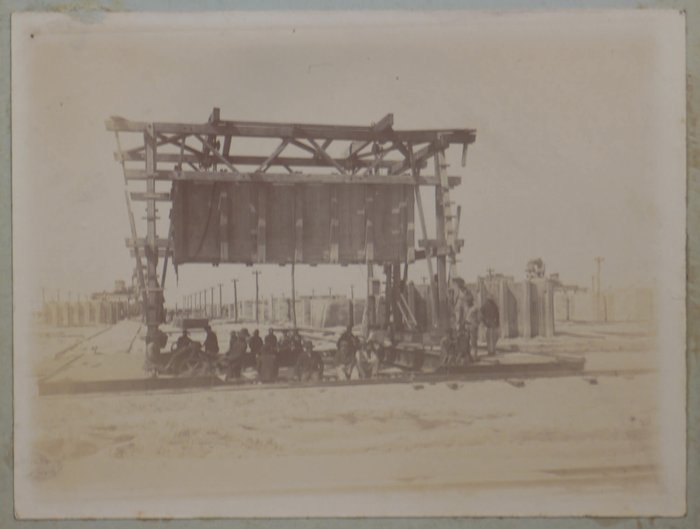
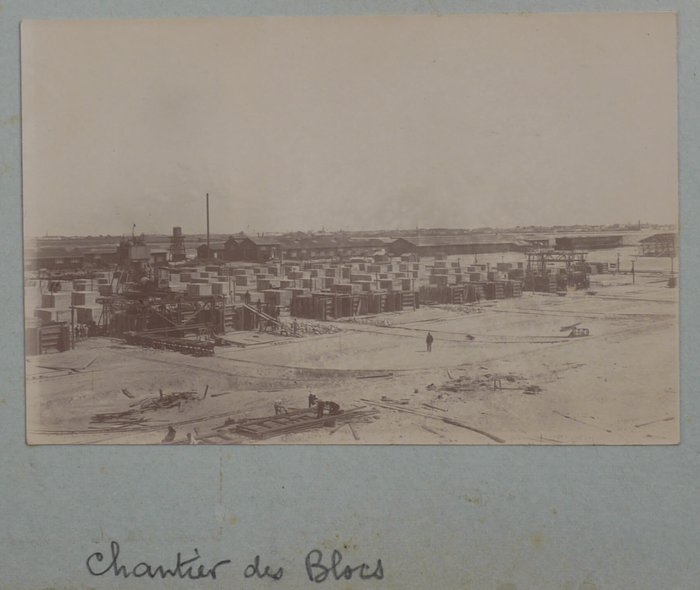

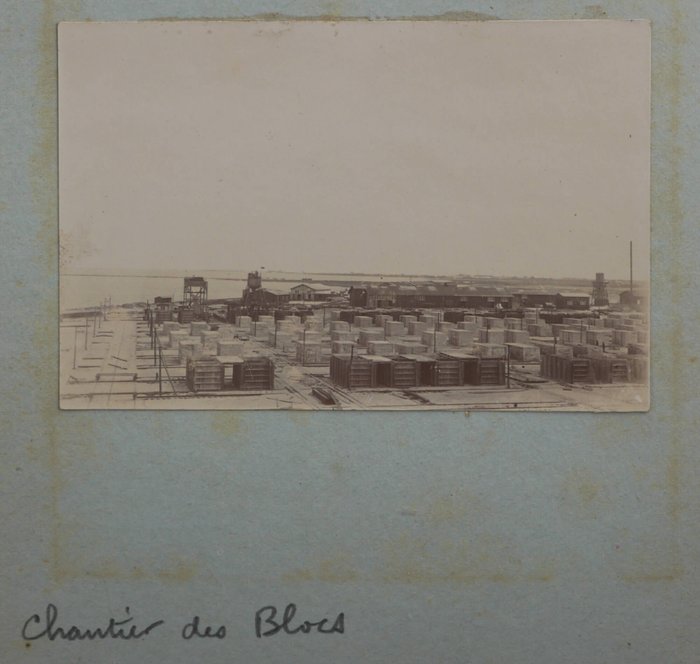
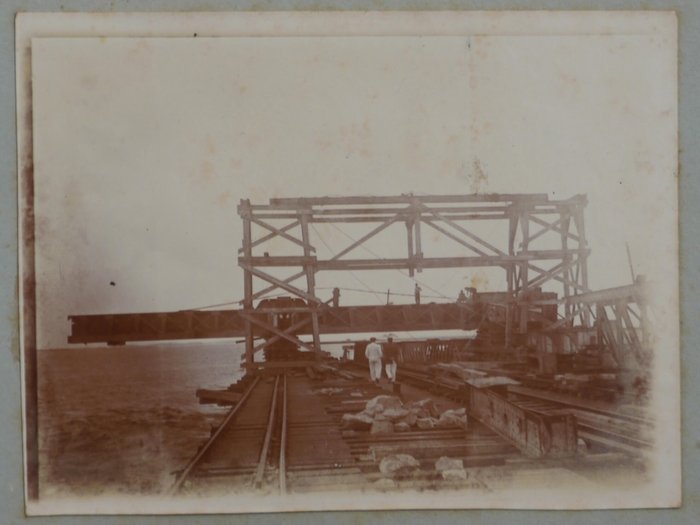
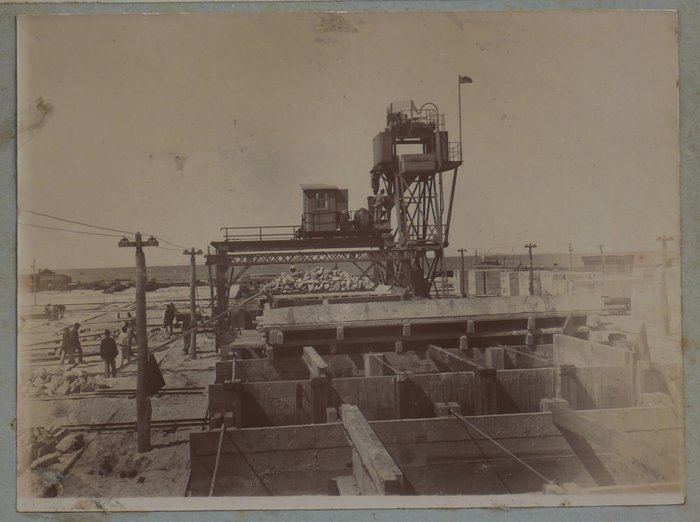

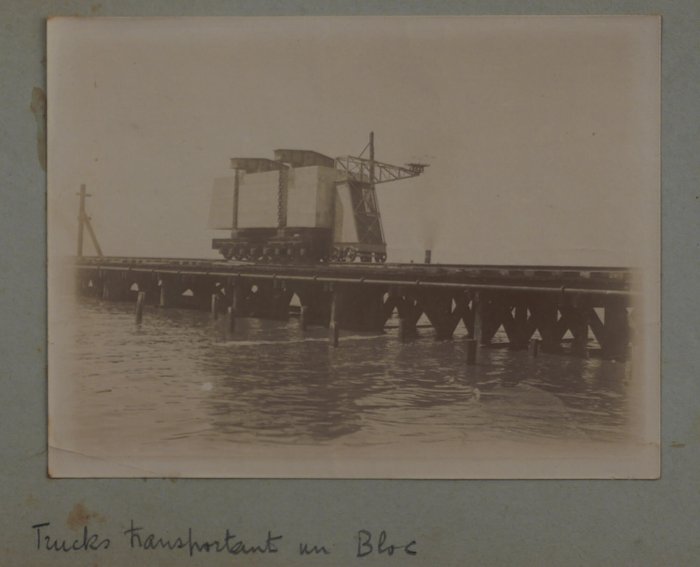

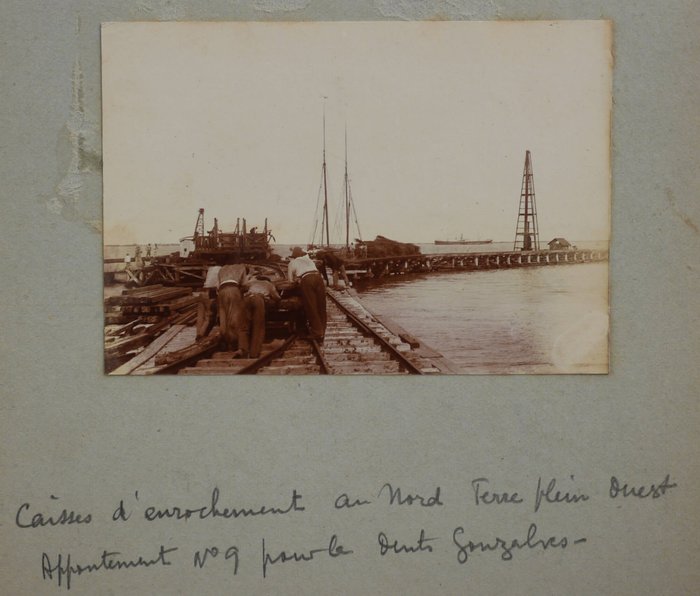

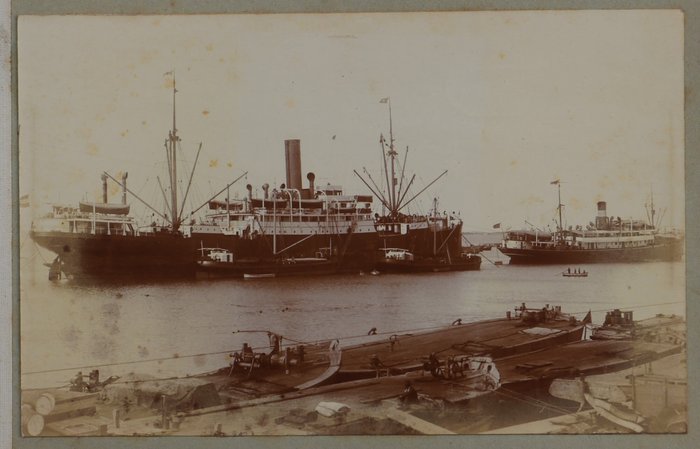
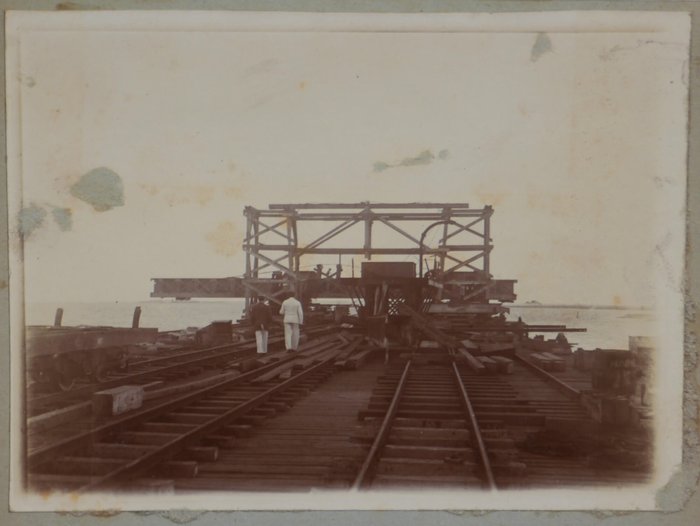
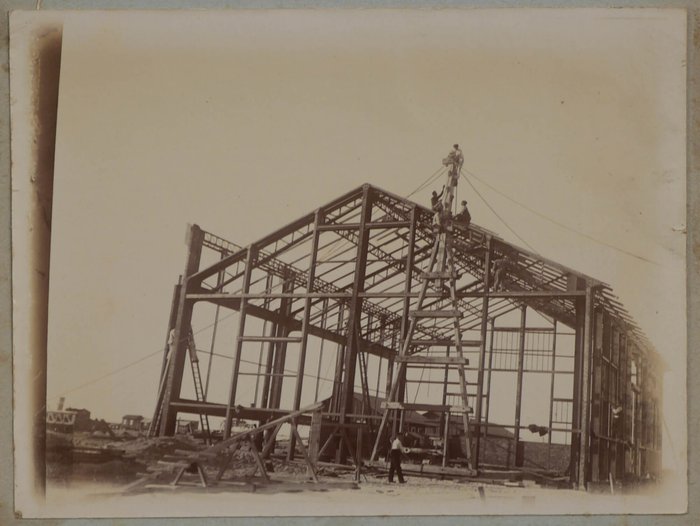
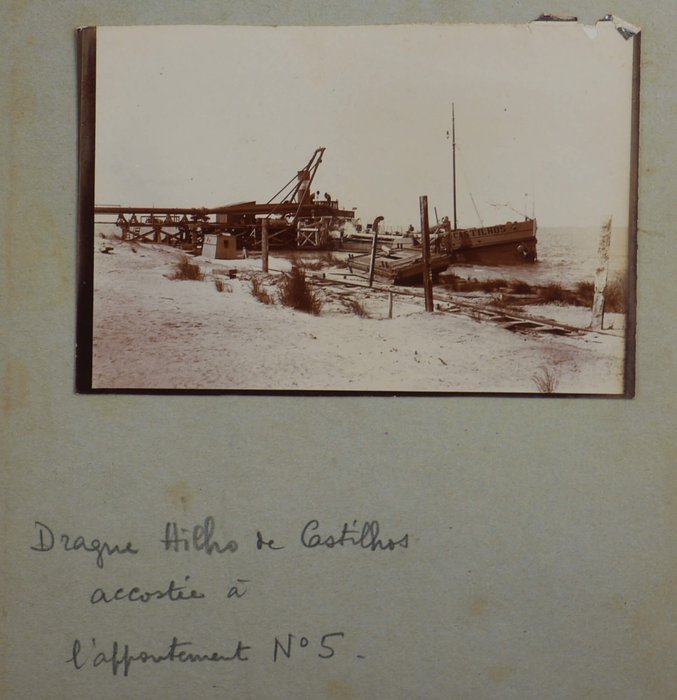
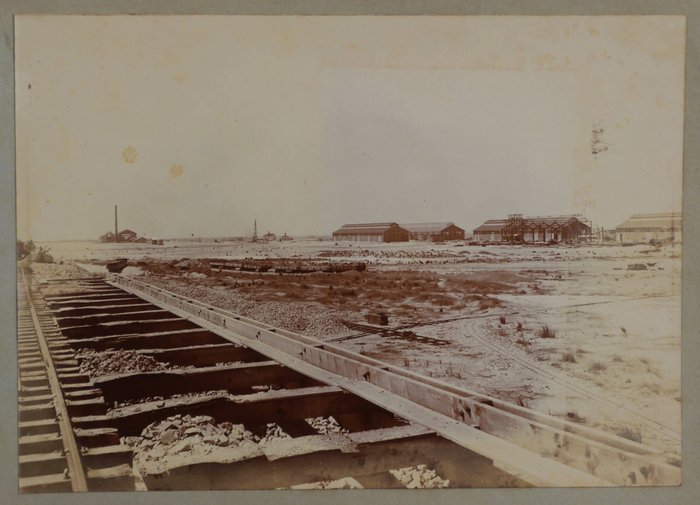
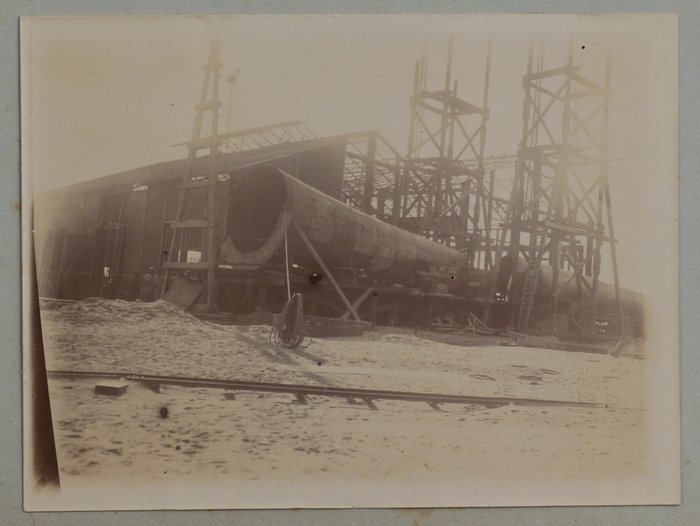
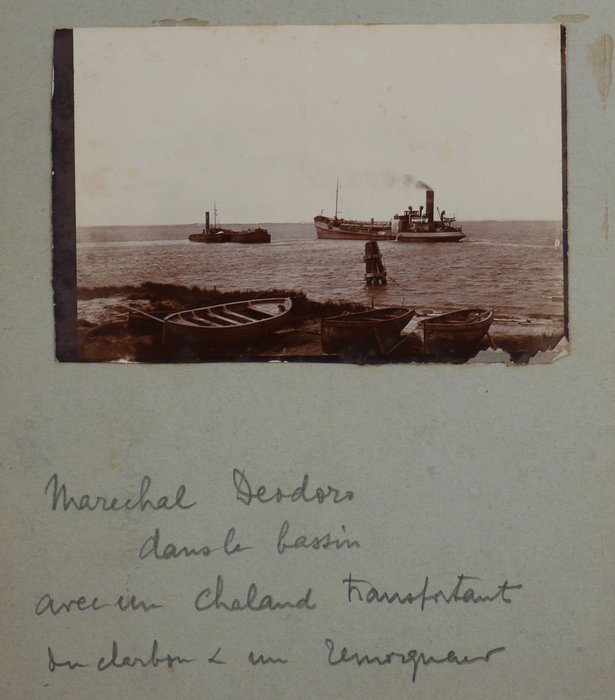
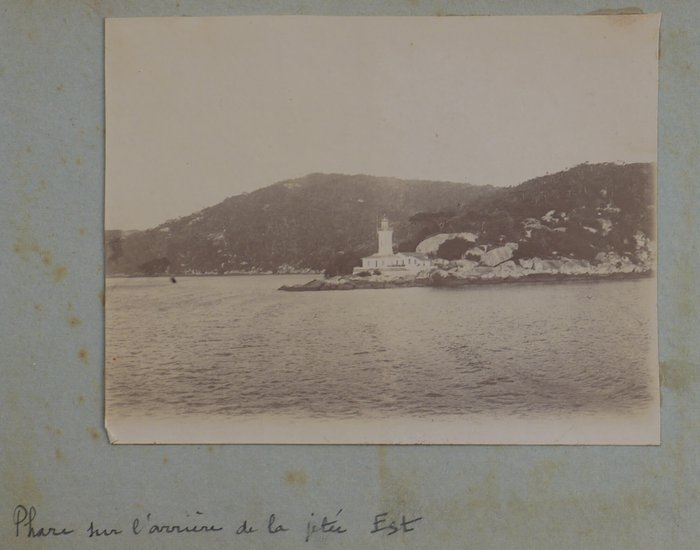
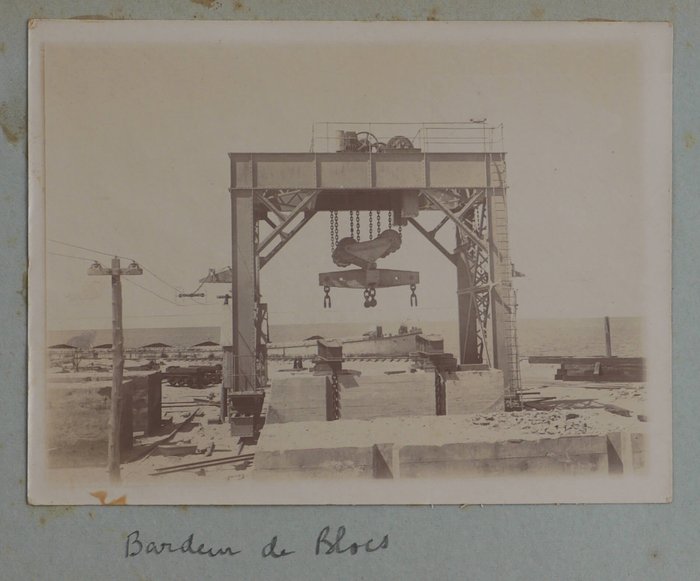
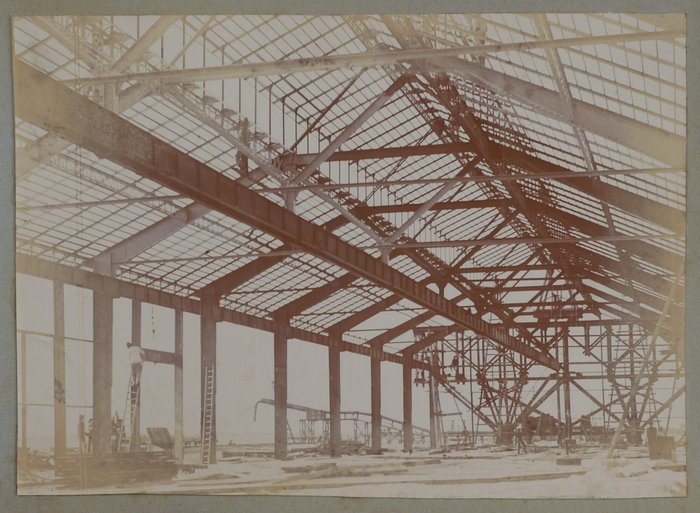
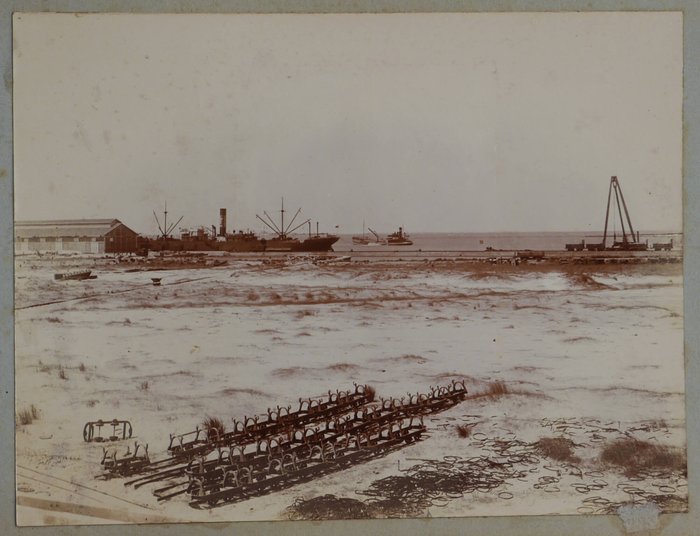
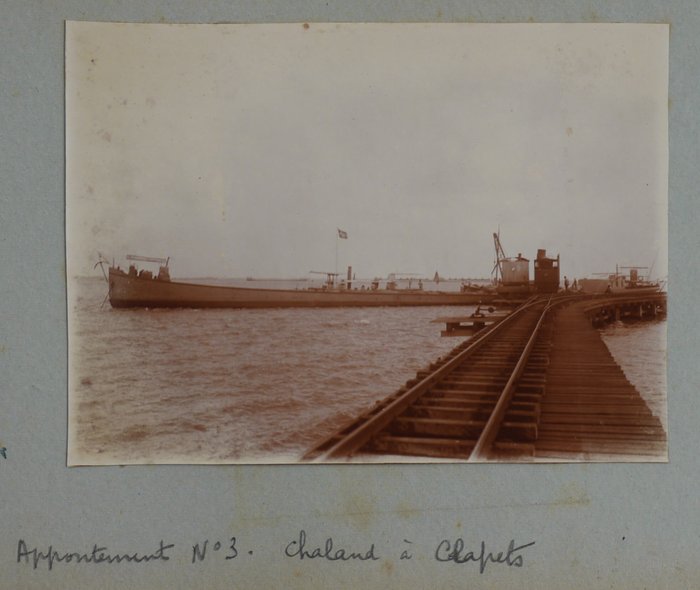
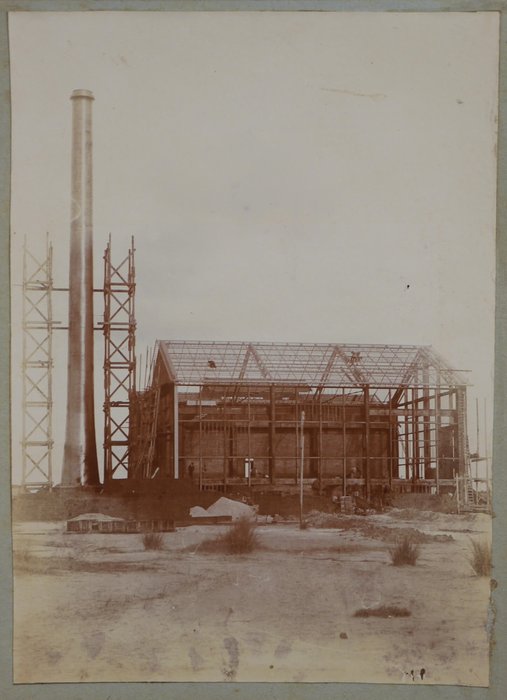
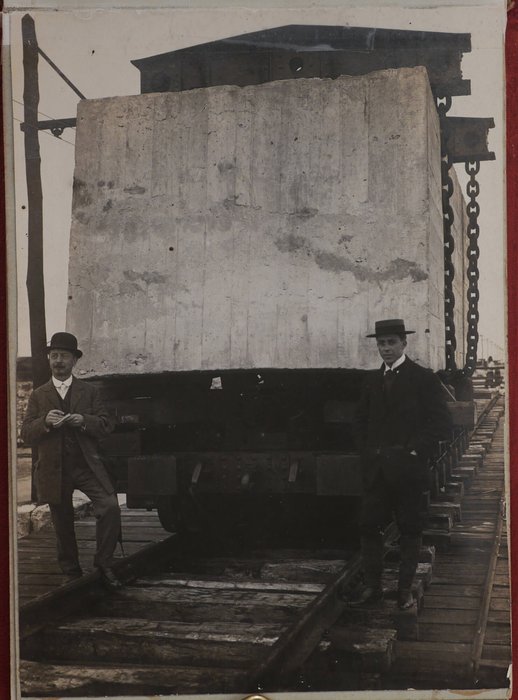
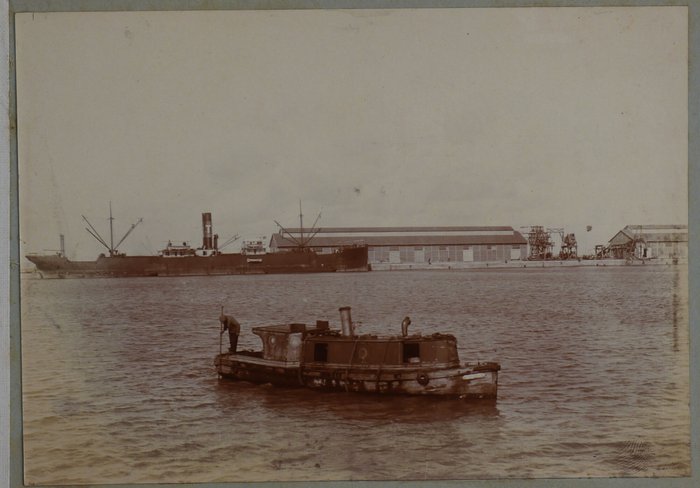
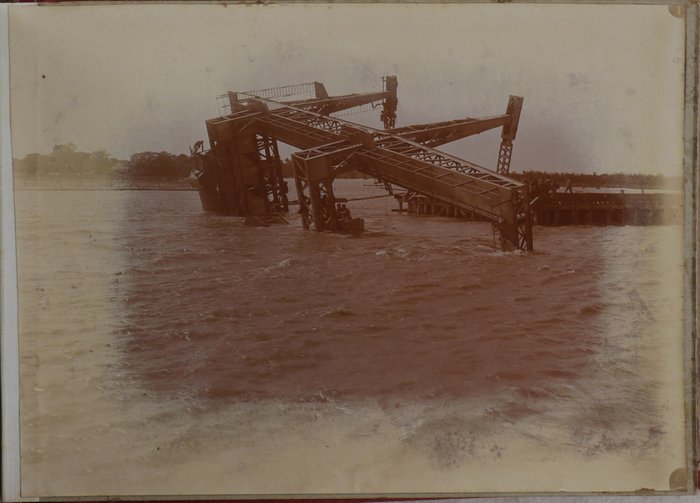
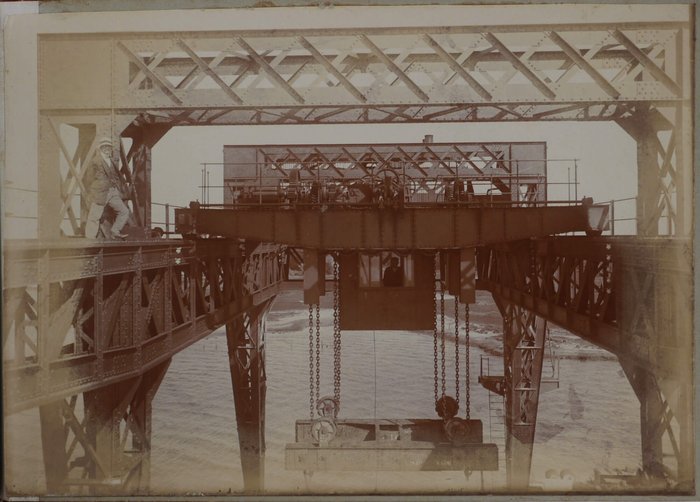
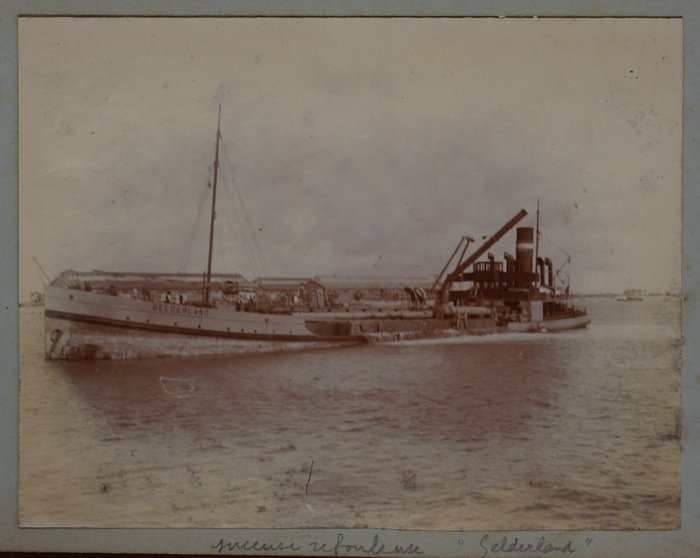
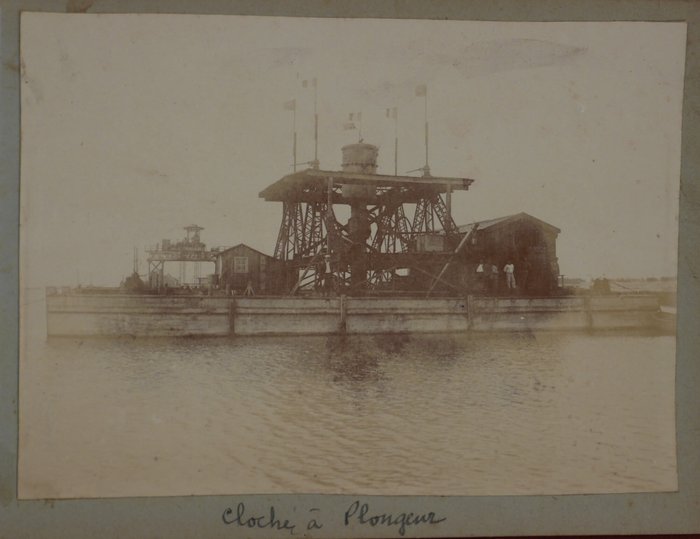
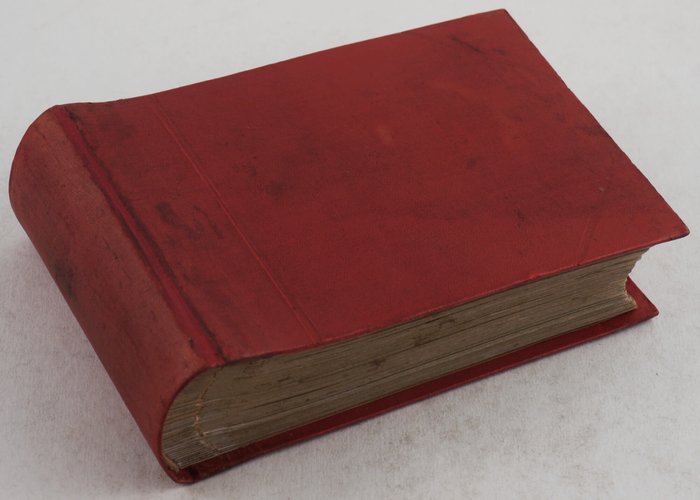
#PA9
Ca. 1910s
Oblong Octavo album (ca. 14x20,5 cm). 50 card stock leaves. With 108 mounted gelatin silver photographs from ca. 12,5x17,5 cm (4 ¾ x 6 ¾ in) to ca. 5x8,5 cm (2 x 3 ¼ in). Over thirty photos with period pencil captions in French on the mounts. Period red full cloth album, neatly repaired on the hinges. A few images mildly faded, several mounts slightly soiled or with the residue of photos being detached and repositioned, but overall a very good album.
Rare extensive collection of original photographs illustrating the large-scale construction of port facilities in the Patos Lagoon/Lagoa dos Patos (Brazilian province of Rio Grande do Sul) in the early 20th century. The first leaf bears a period pencil inscription in French “Porto Alegre, Brésil,” but it looks like most photos document the construction of Porto Novo in Rio Grande, now one of the main ports of Brazil and Latin America. Several views look very similar to the original photos from the collections of the Library of the Port of Rio Grande (Fereira, G.R.M. O acervo antigo da biblioteca do Porto do Rio Grande// Revista Memória em rede. Universidade Federal de Pelotas. 2015. V. 7. No. 13. Pp. 172-180; see more). The photos were most likely taken by a French associate of the “Compagnie Française du Port du Rio Grande do Sul,” which managed the construction of both ports in the 1910s. The Porto Novo of Rio Grande was built in 1910-1915. The port facilities in the provincial capital Porto Alegre went under major reconstruction in 1913. Due to WW1, the process slowed down and was not completed until 1921, mostly under Brazilian management.
Most photos in the album show construction scenes and sites, newly-built piers and quays, the auxiliary railway, hangars and warehouses, piled cement blocks, machinery, construction workers, etc. Several photos show suction dredges used in construction, including “Gelderland” (1900), “Bento Gonzalves,” and “Tulho[?] de Castilhos.” A large photo portrays two European construction supervisors posing next to a cement block on a railway cart. One of the photos at the rear shows a scene with two workers standing next to a railway track leading to a large metal frame. The metal bars in the right lower corner bear white-painted signs “Rio Grande do Sul.” The other photos show Brazilian coastal defence ship “Marechal Deodoro” (1898-1924), docked ocean steamers, including German liner “Santa Catharina” (1907-1914), the railway bridge at Pelotas, Itapua da Lagoa lighthouse near Port Alegre (built in 1860 at the entrance of Canal do Itapua, which connects the Lagoa dos Patos with the Guaiba River estuary), etc. Overall a historically significant original source on the early history of the Port of Rio Grande and the industrial development of the Patos Lagoon in southern Brazil.

